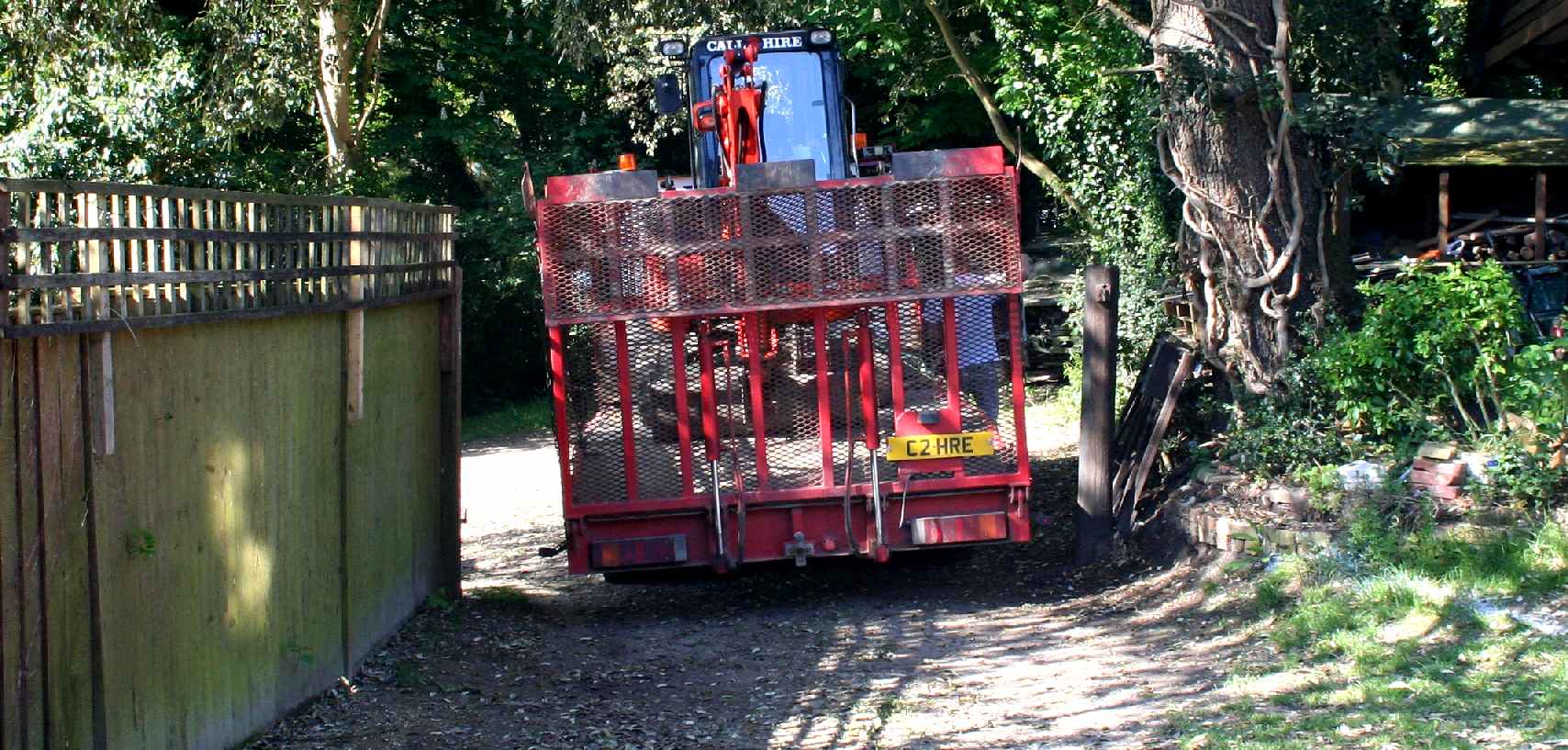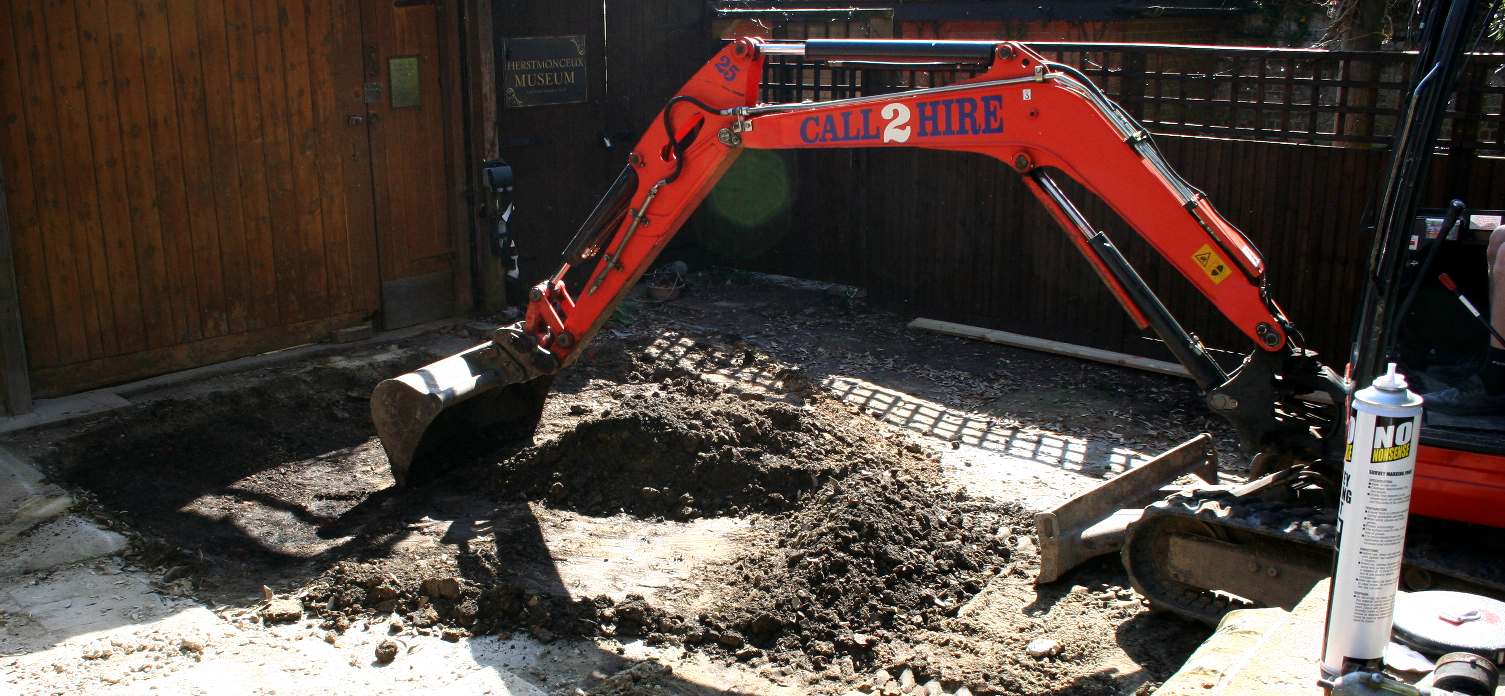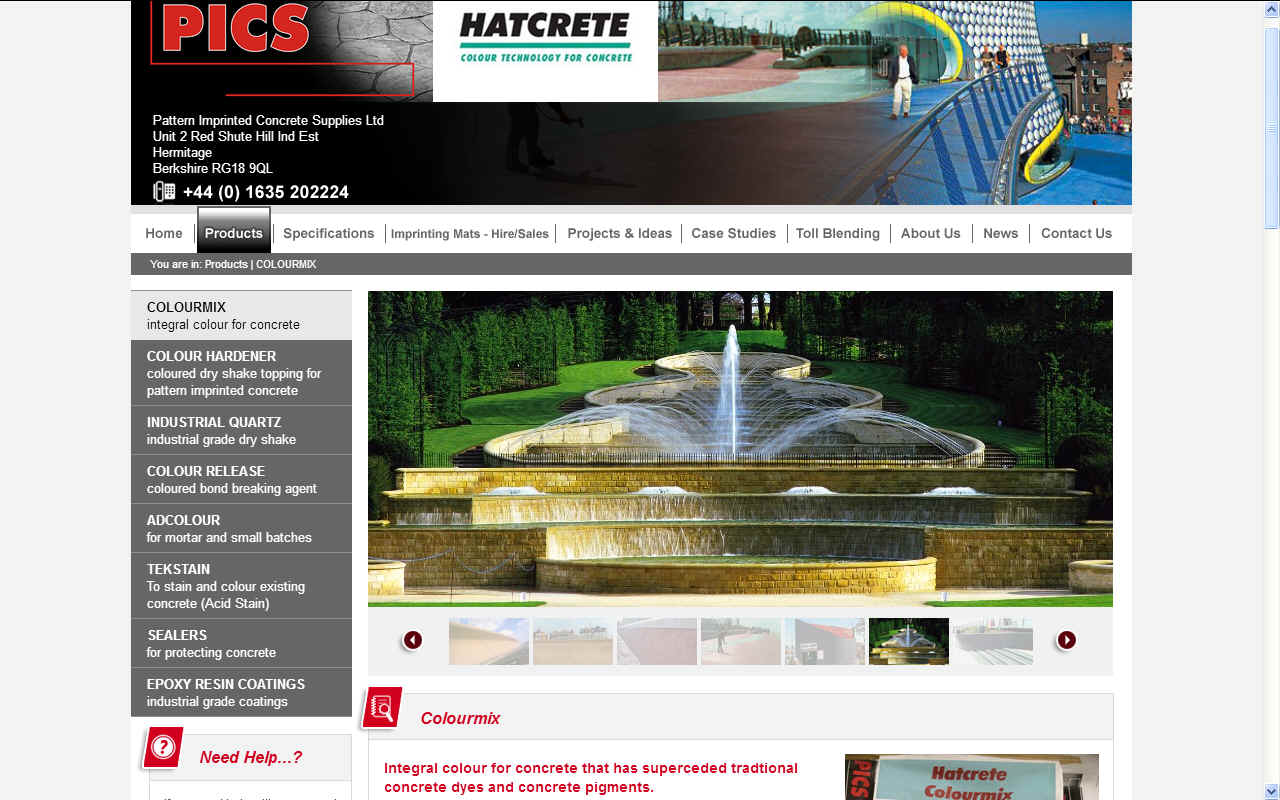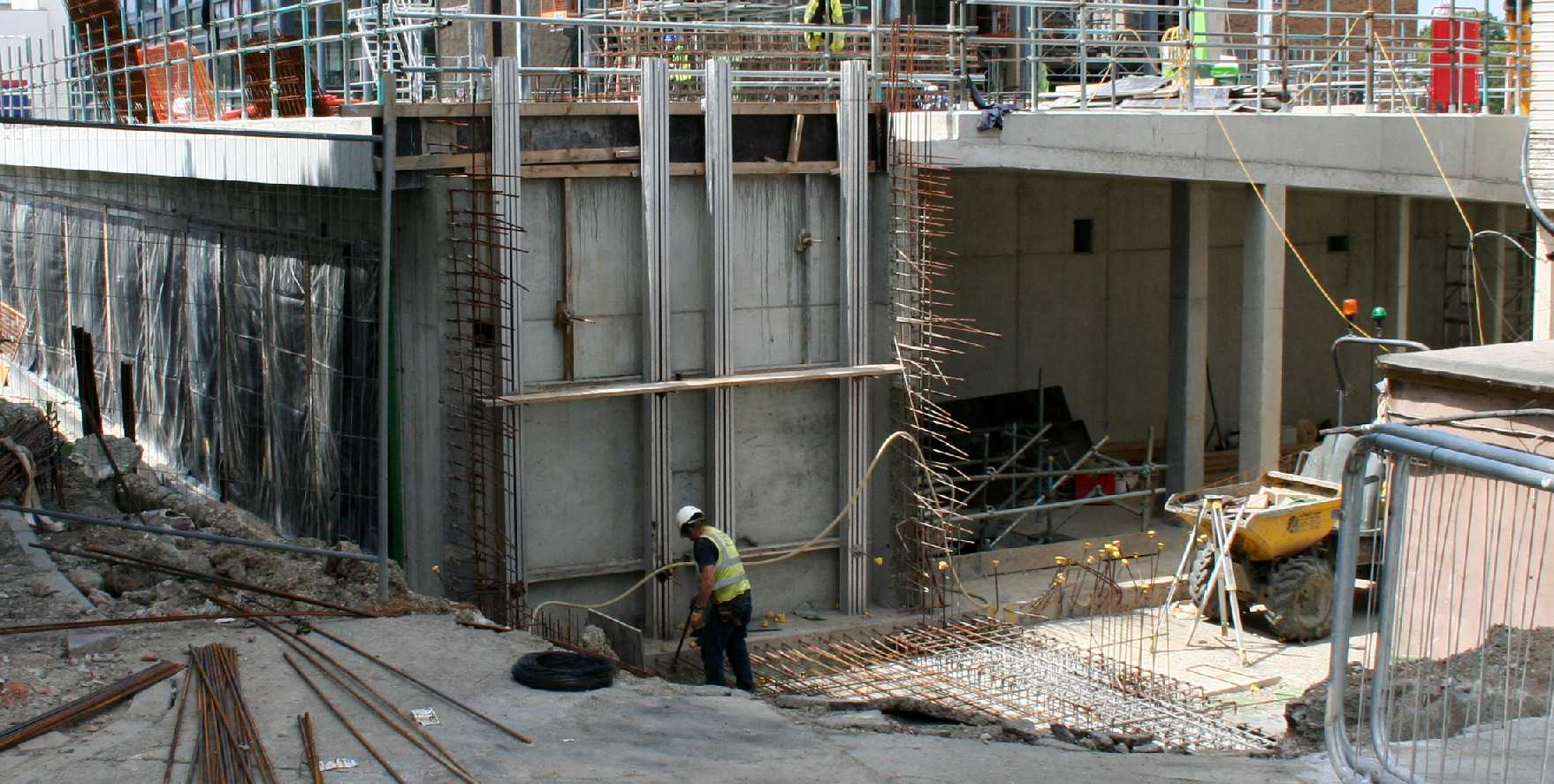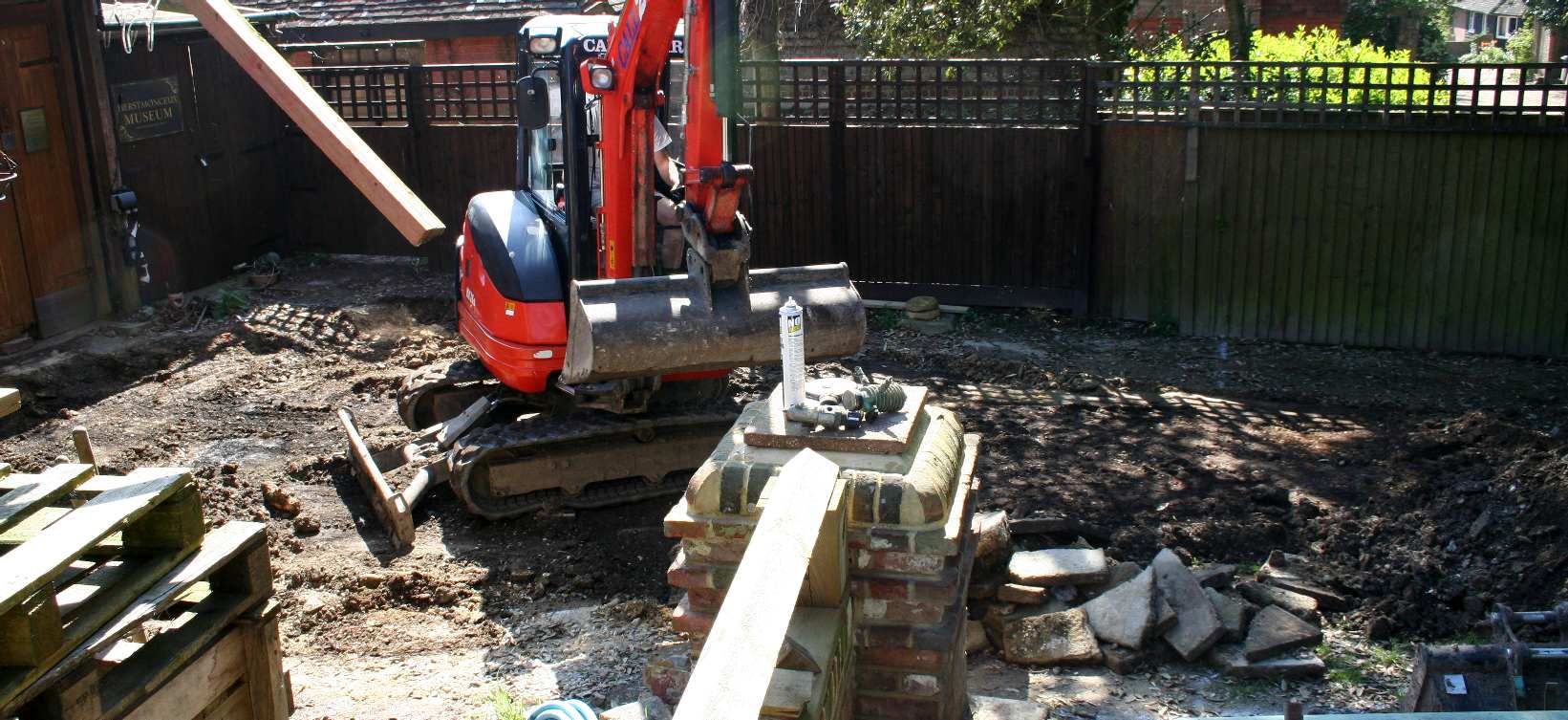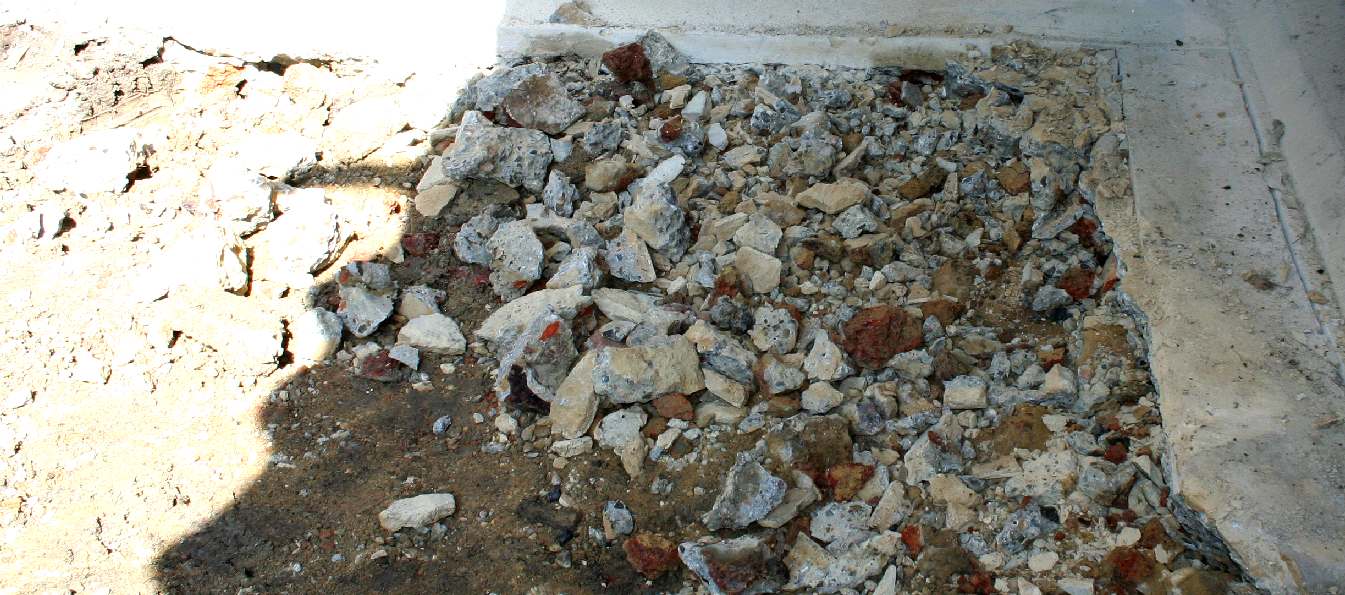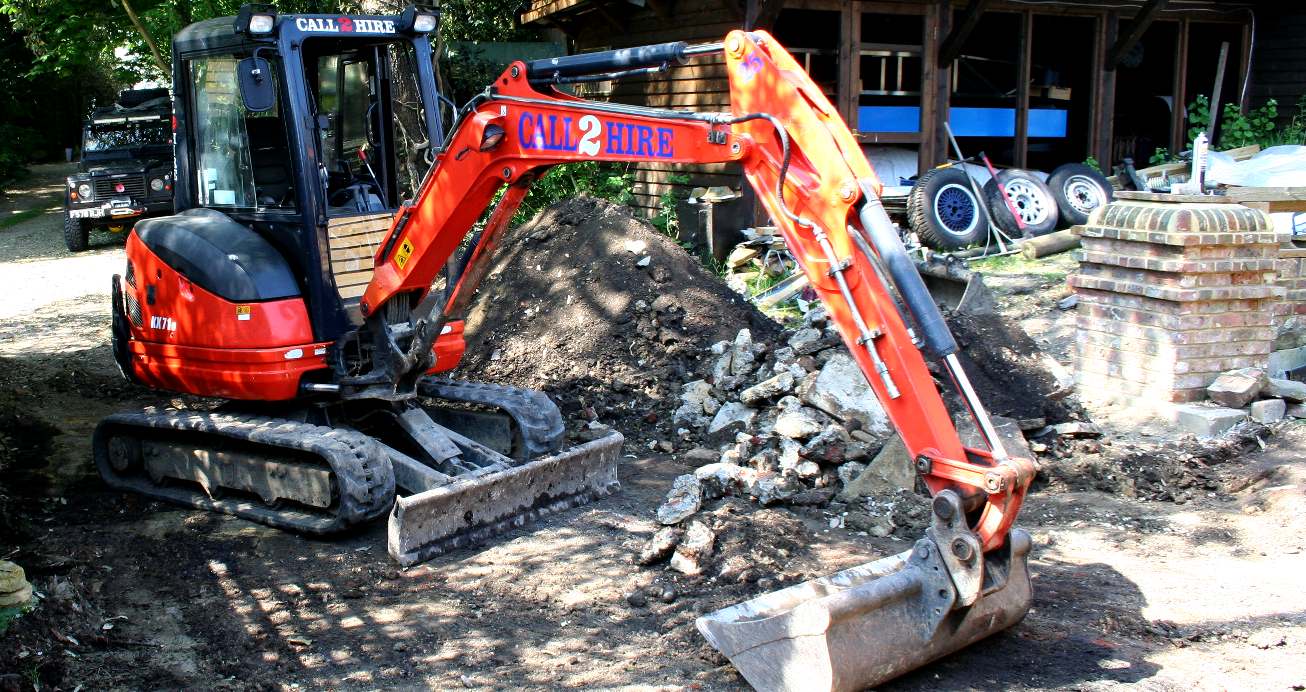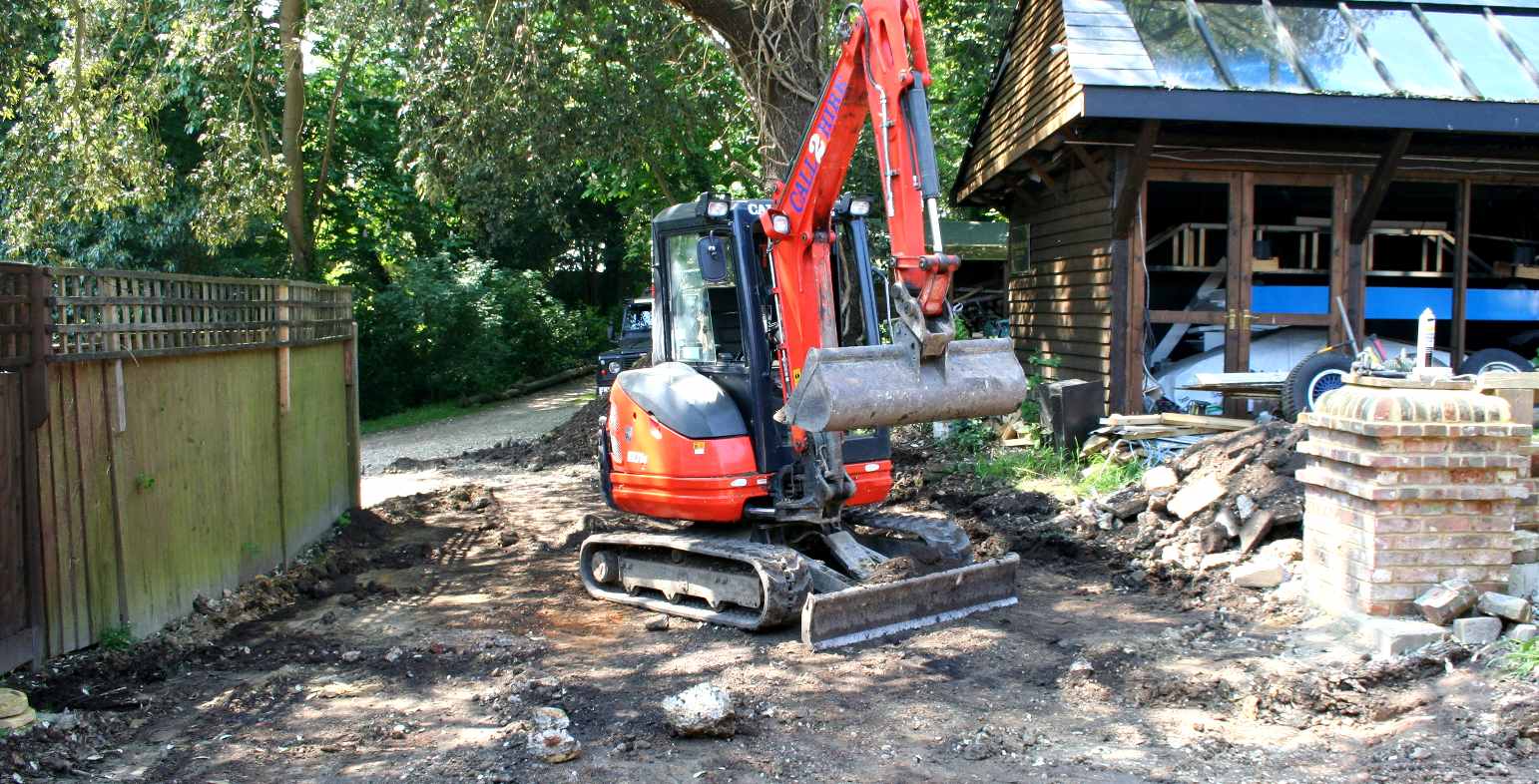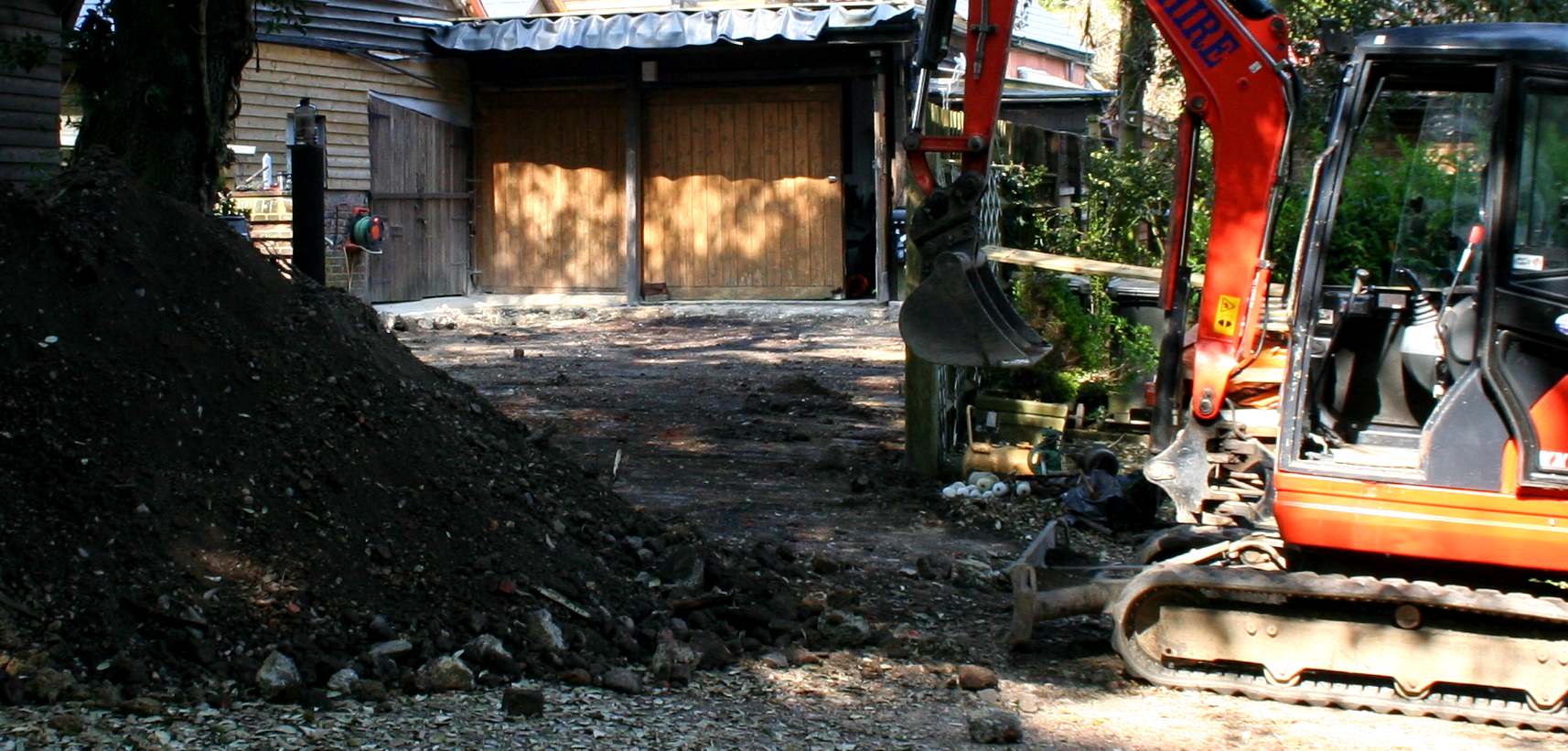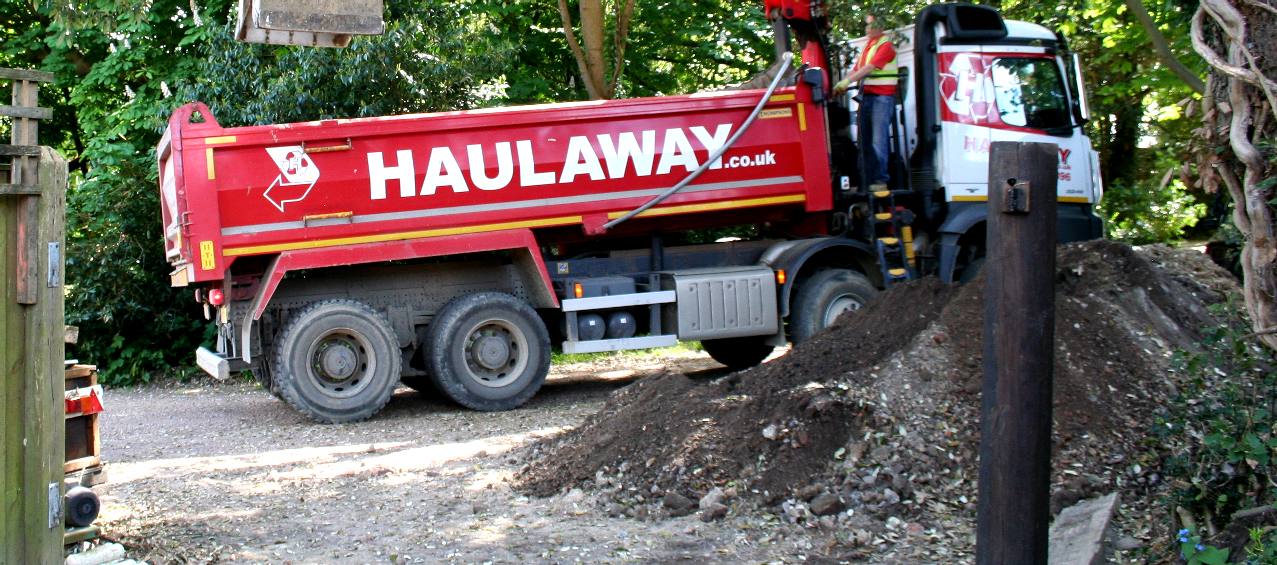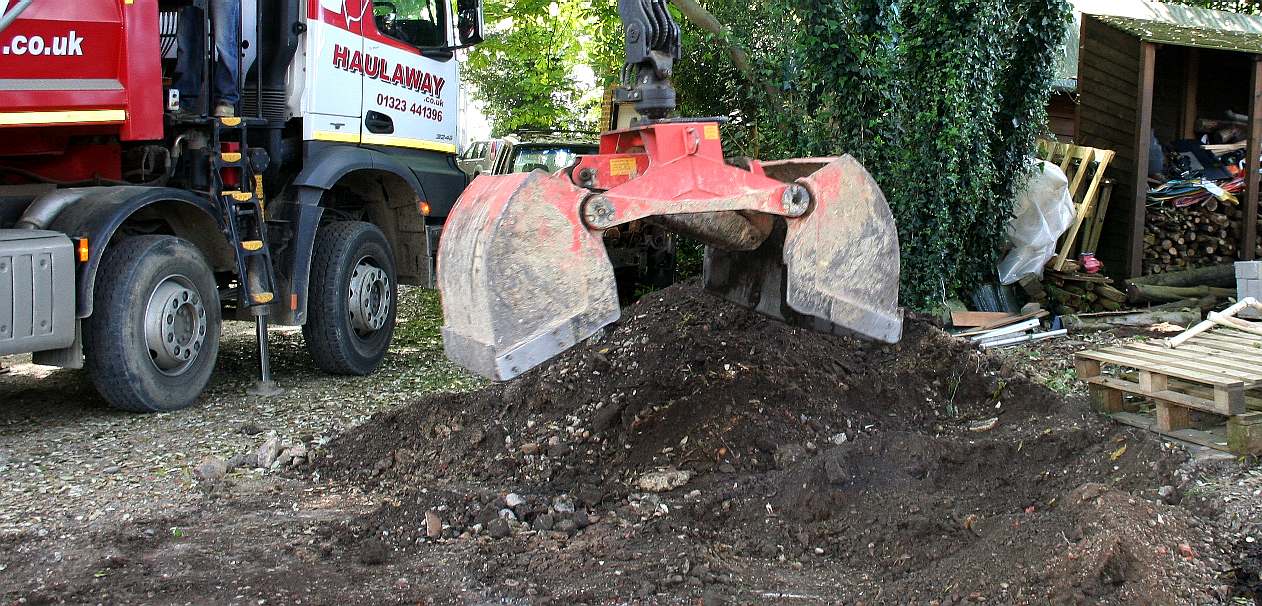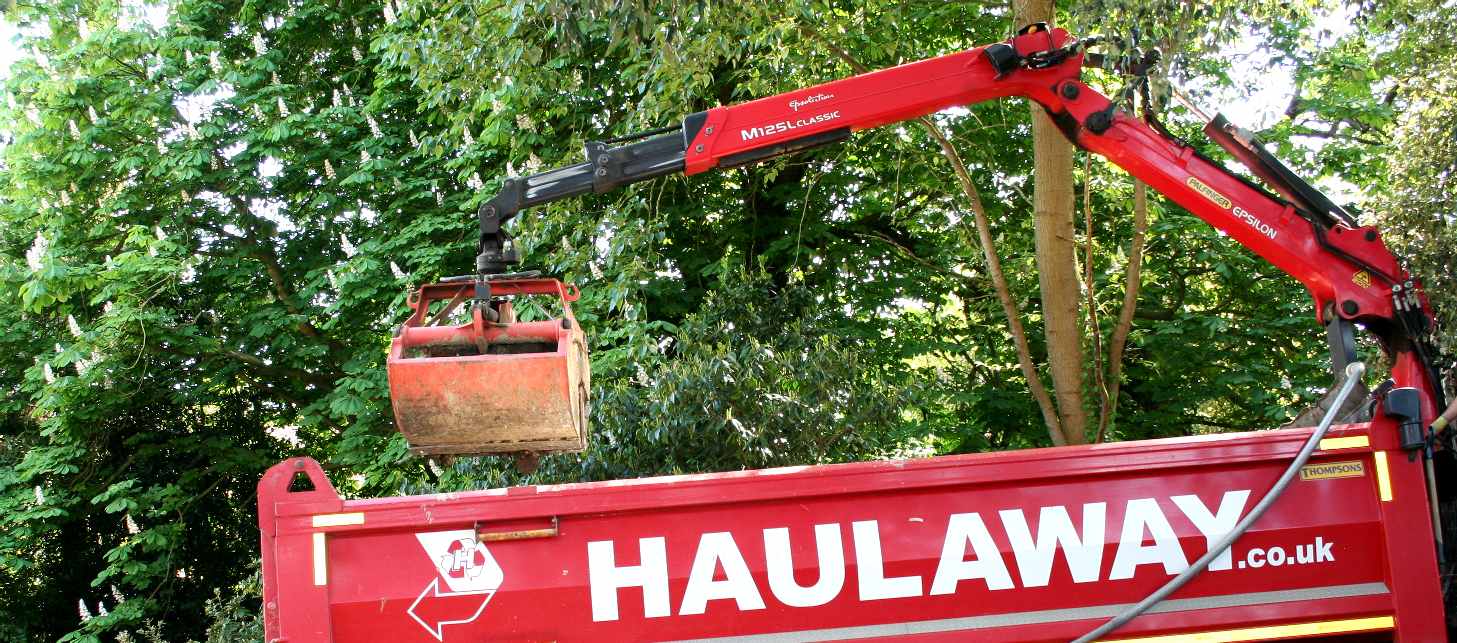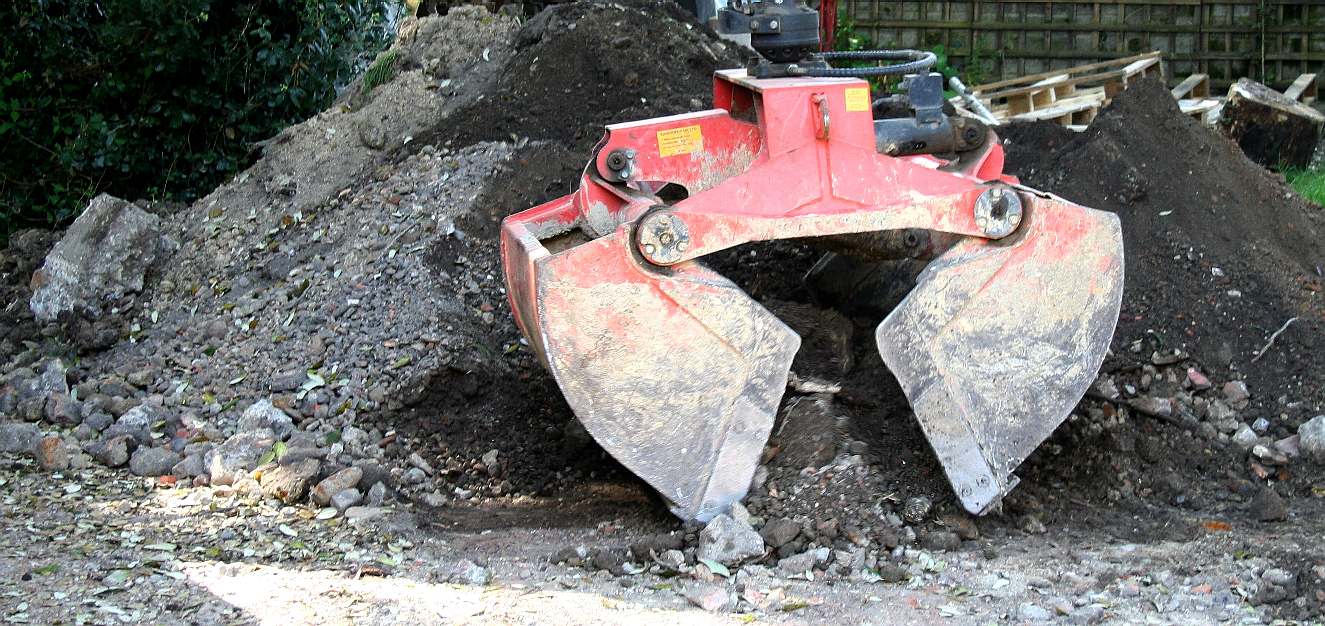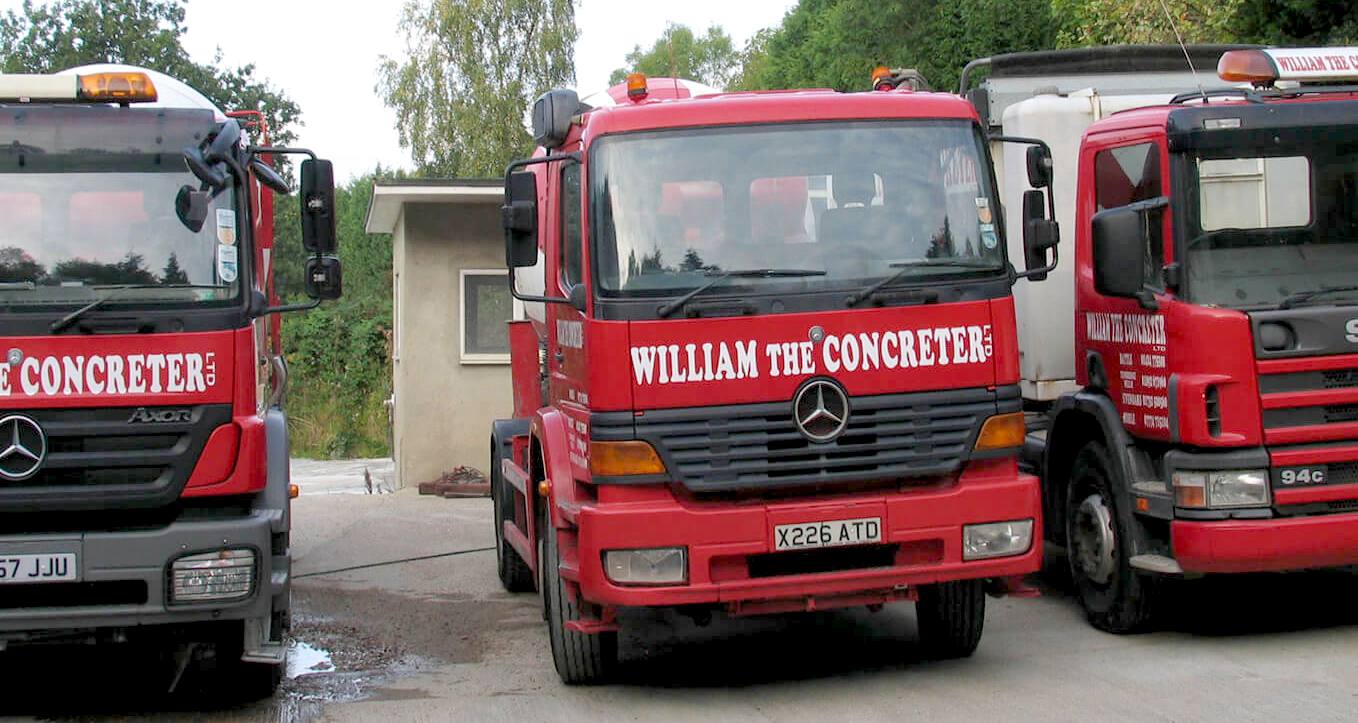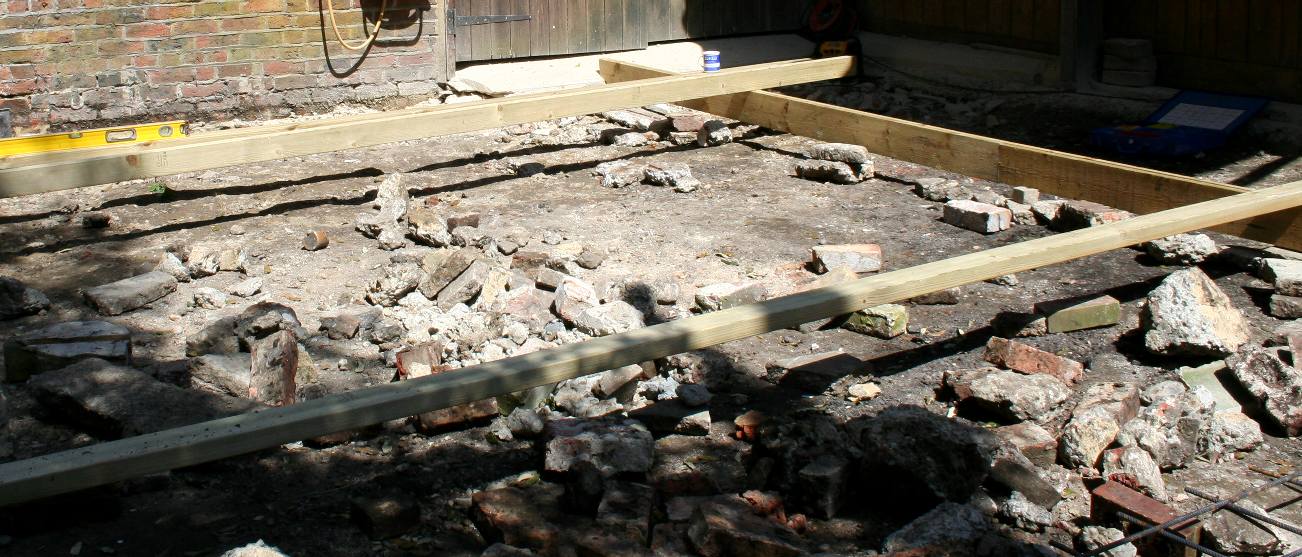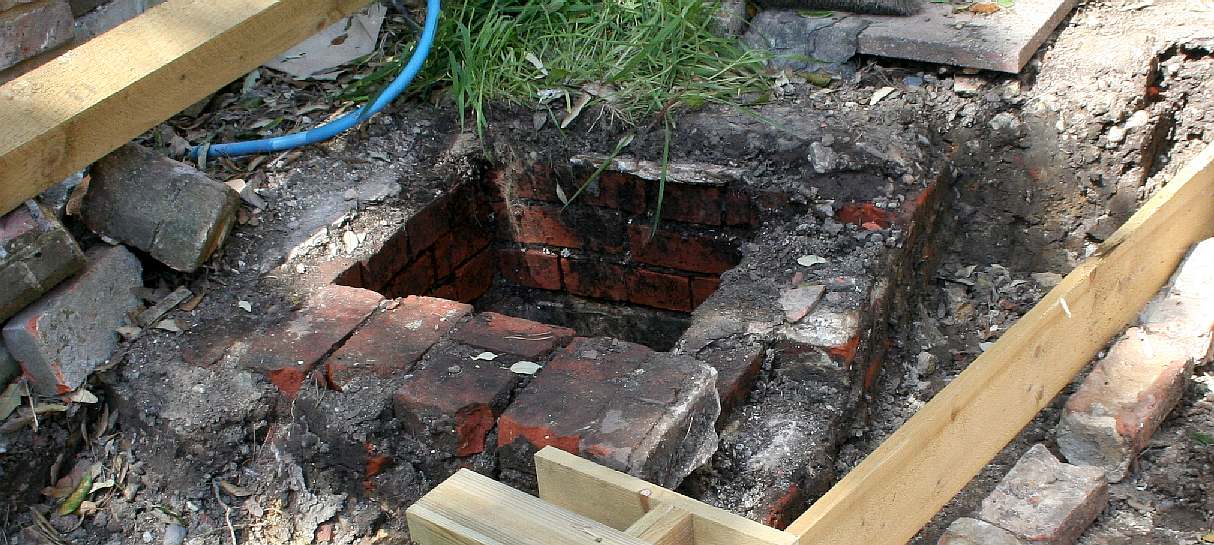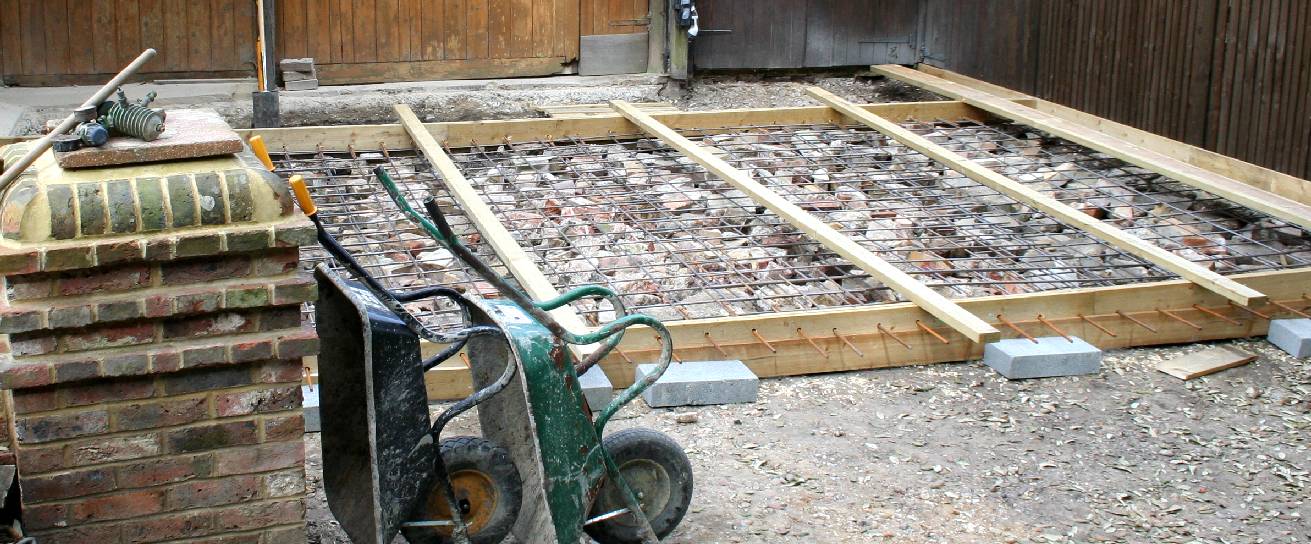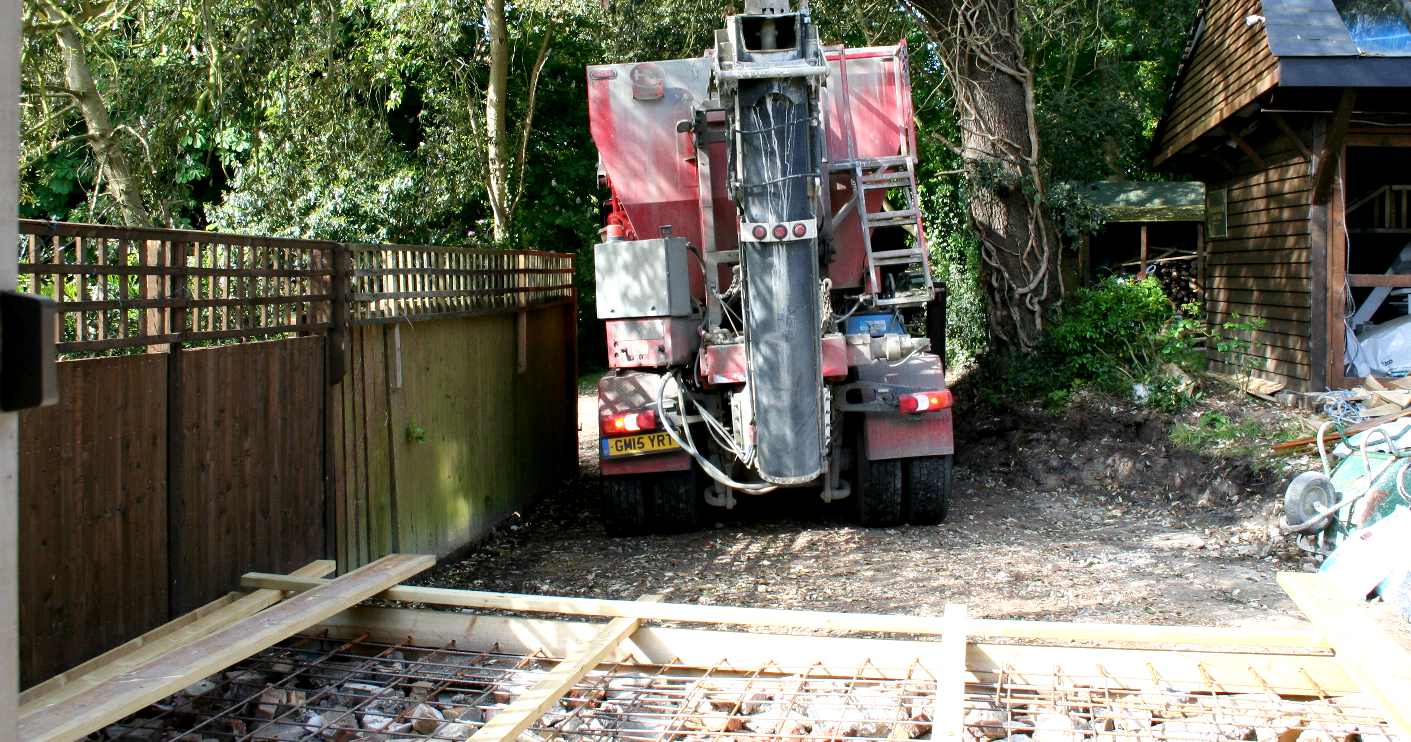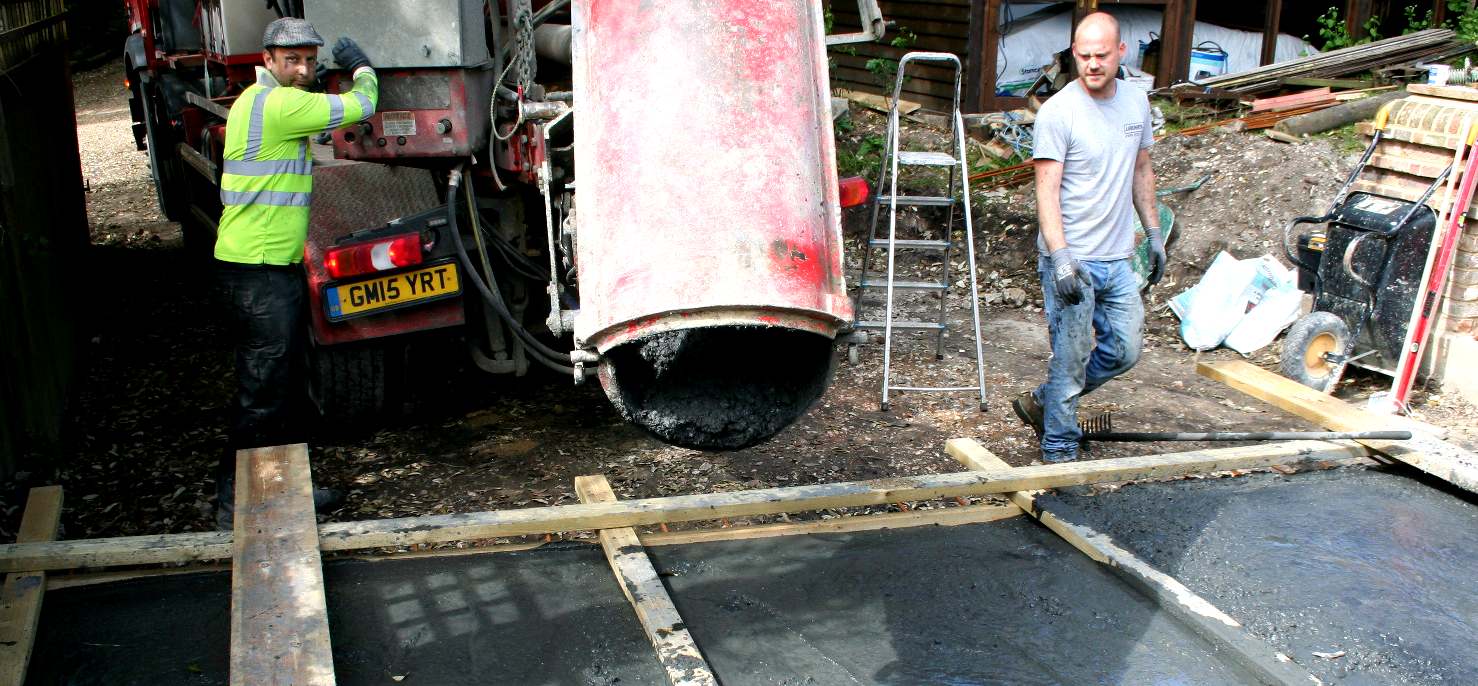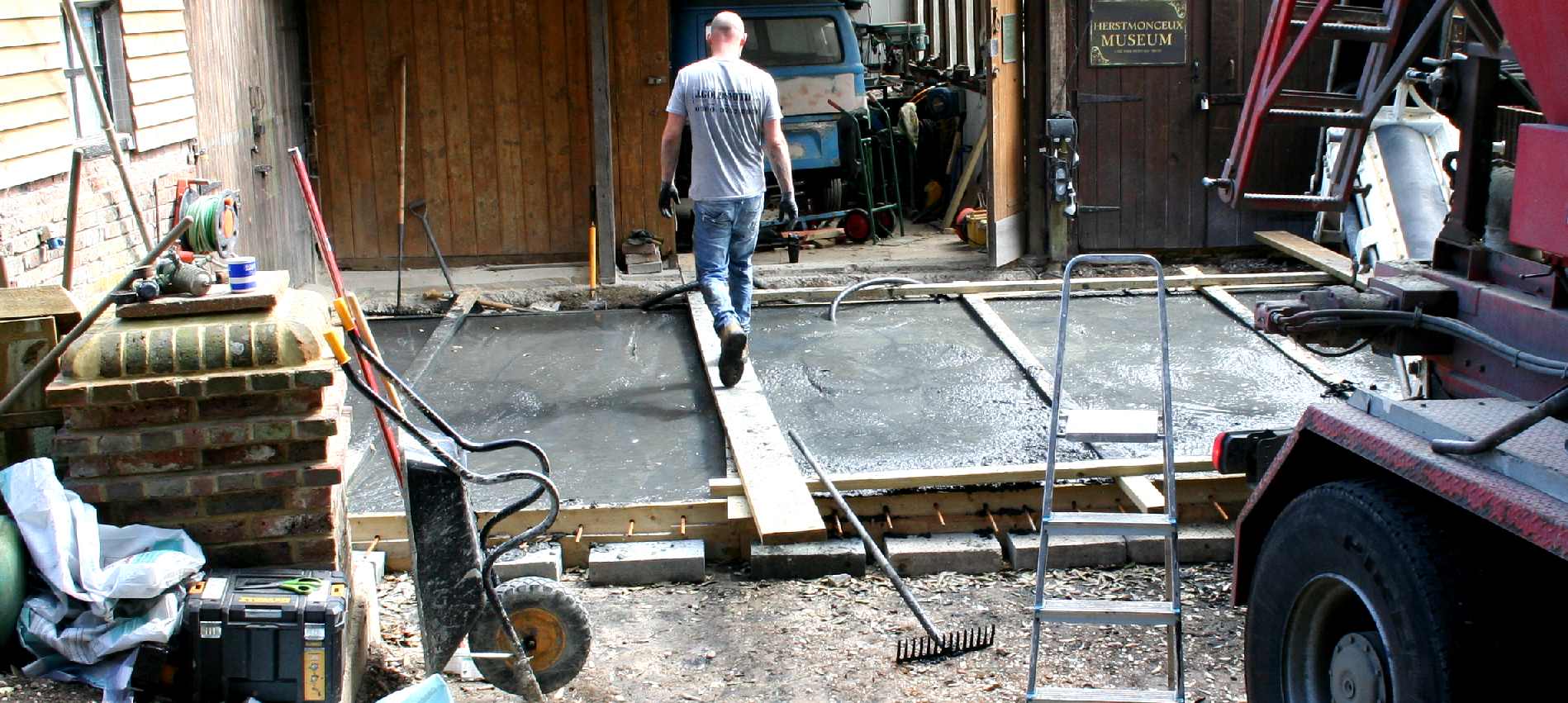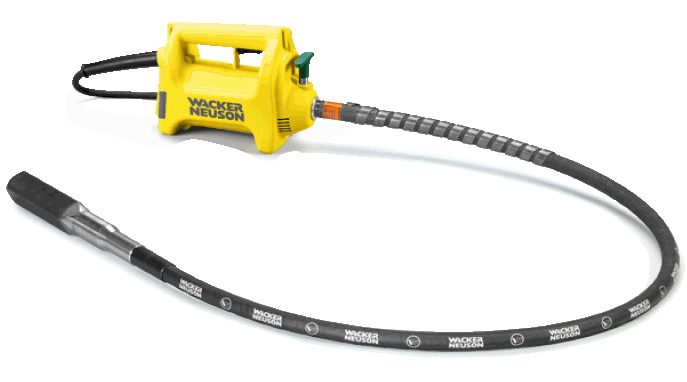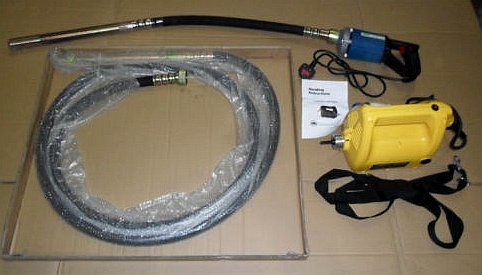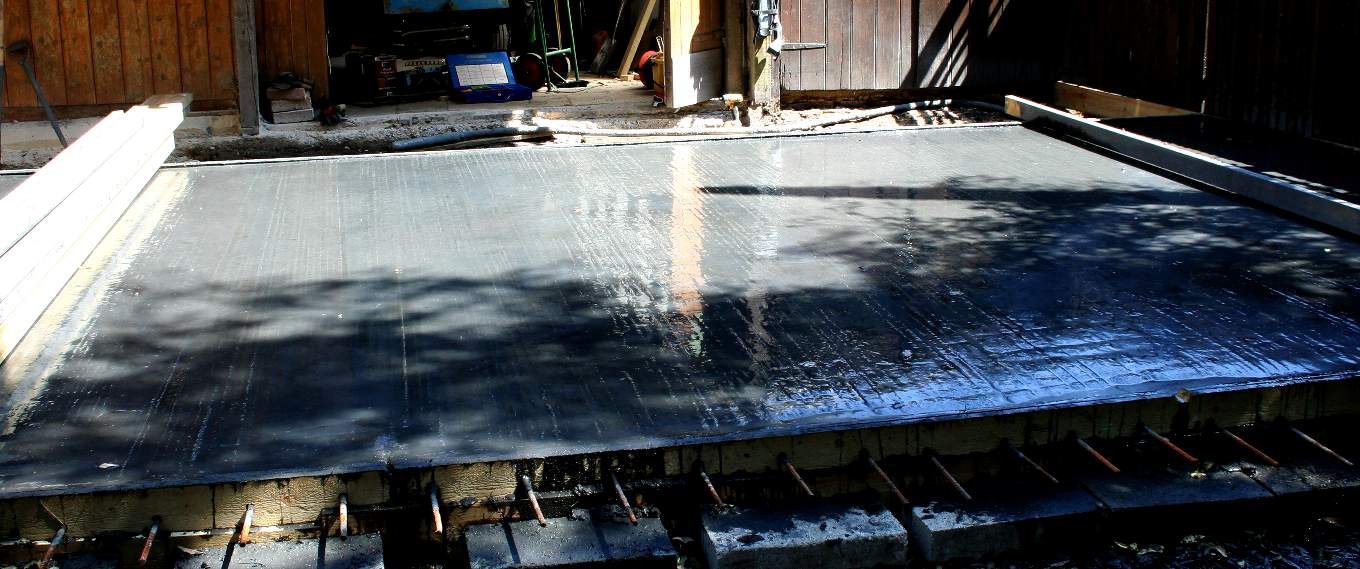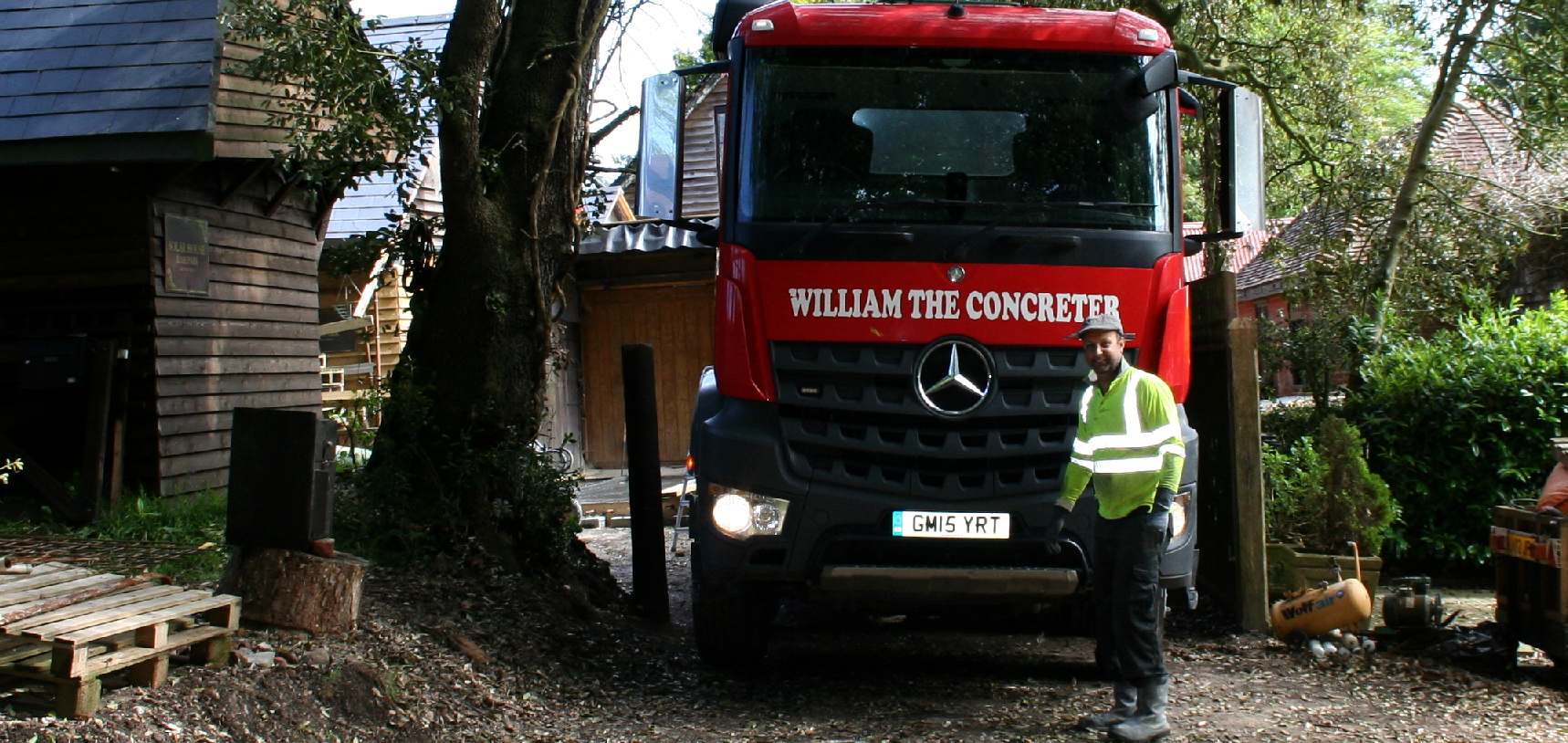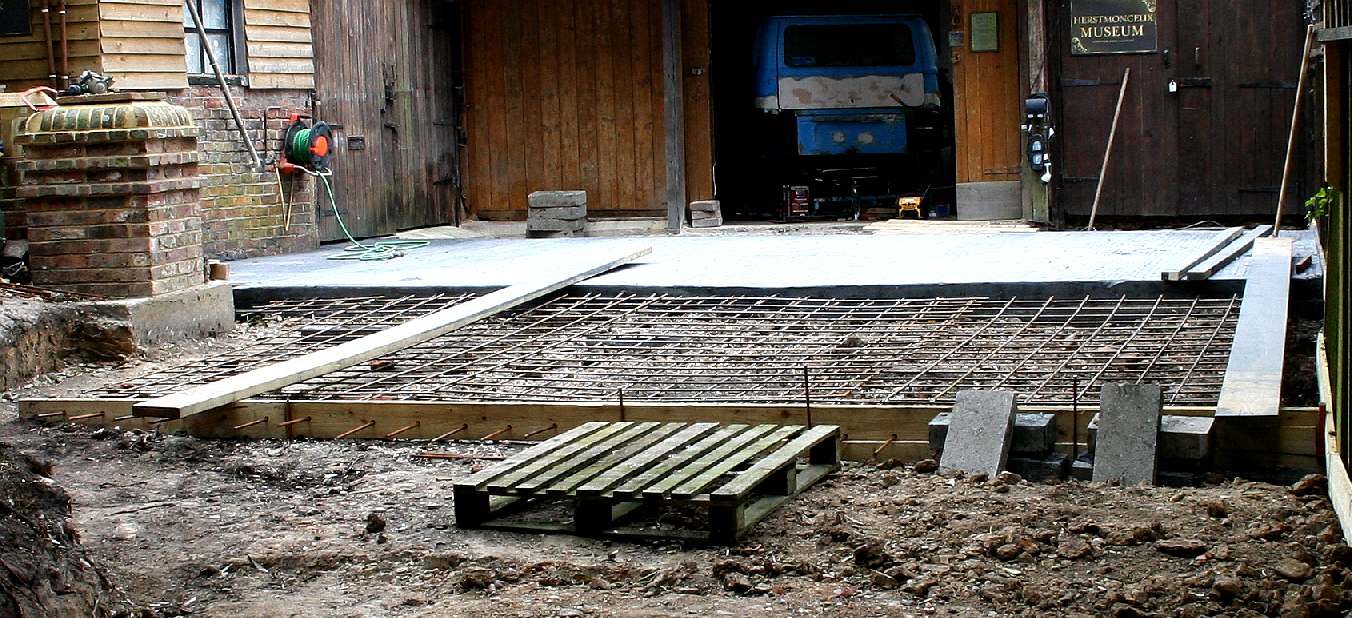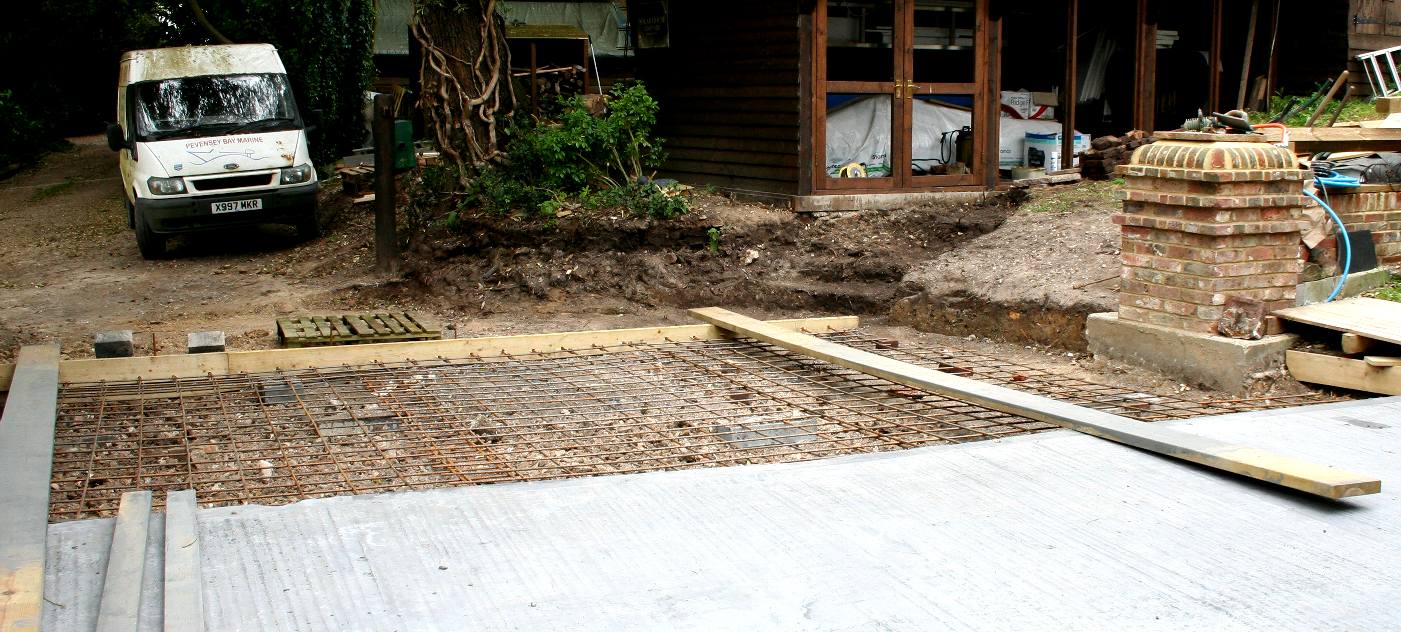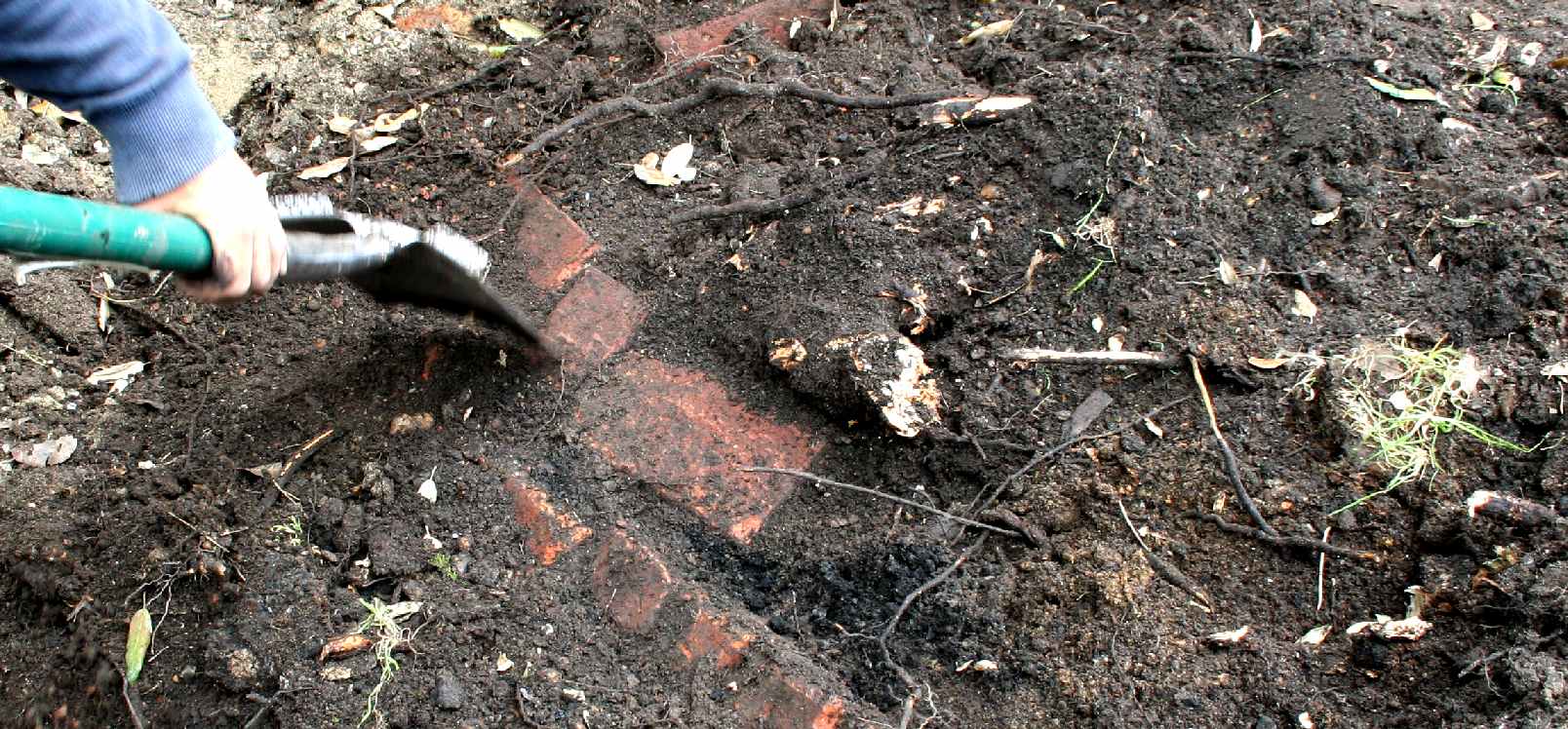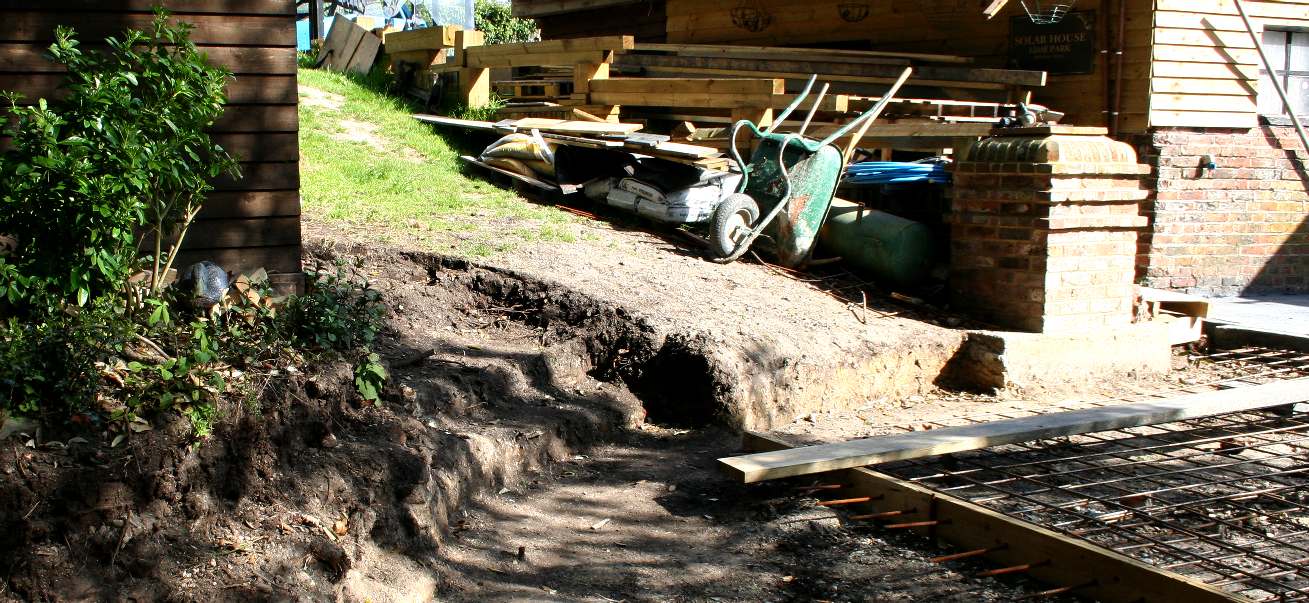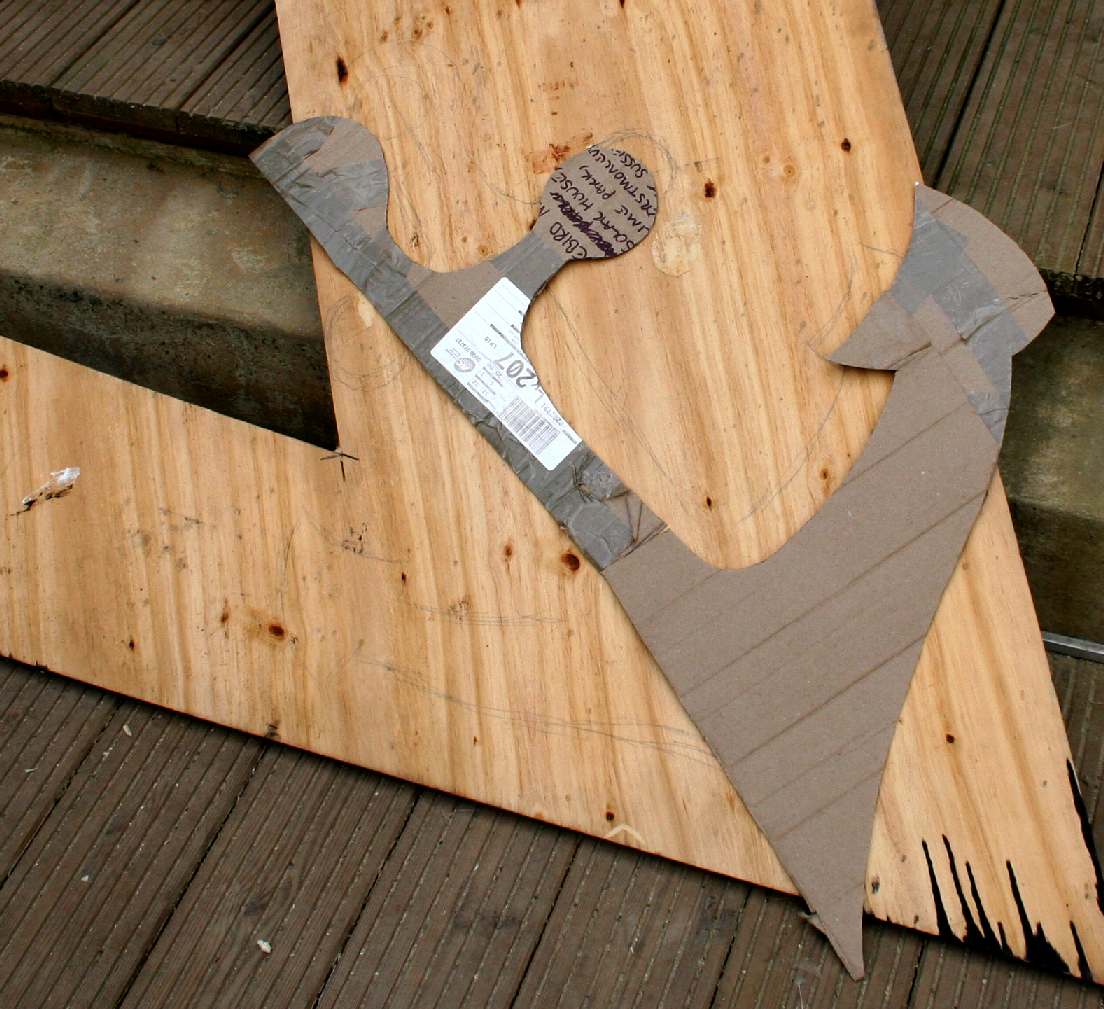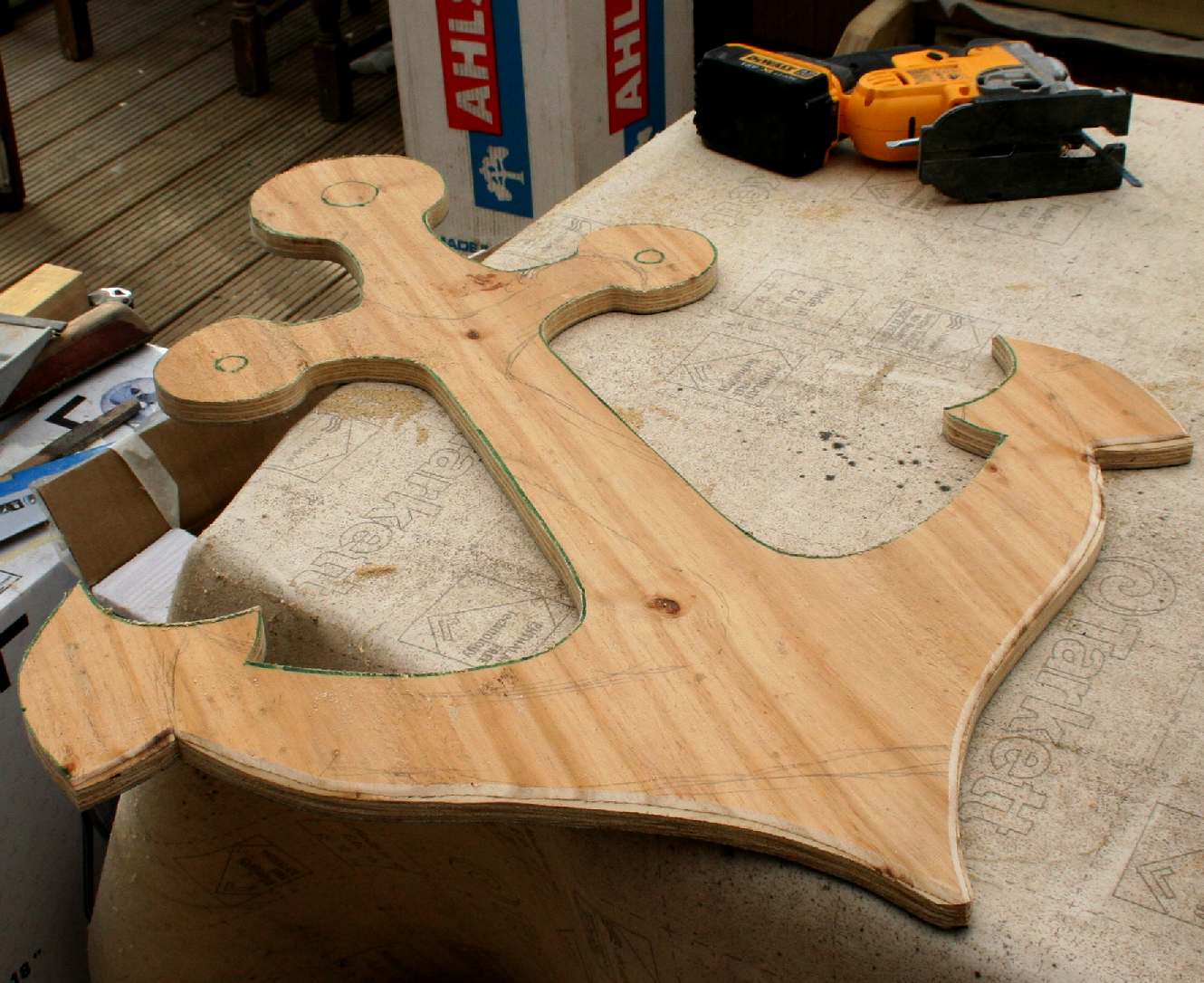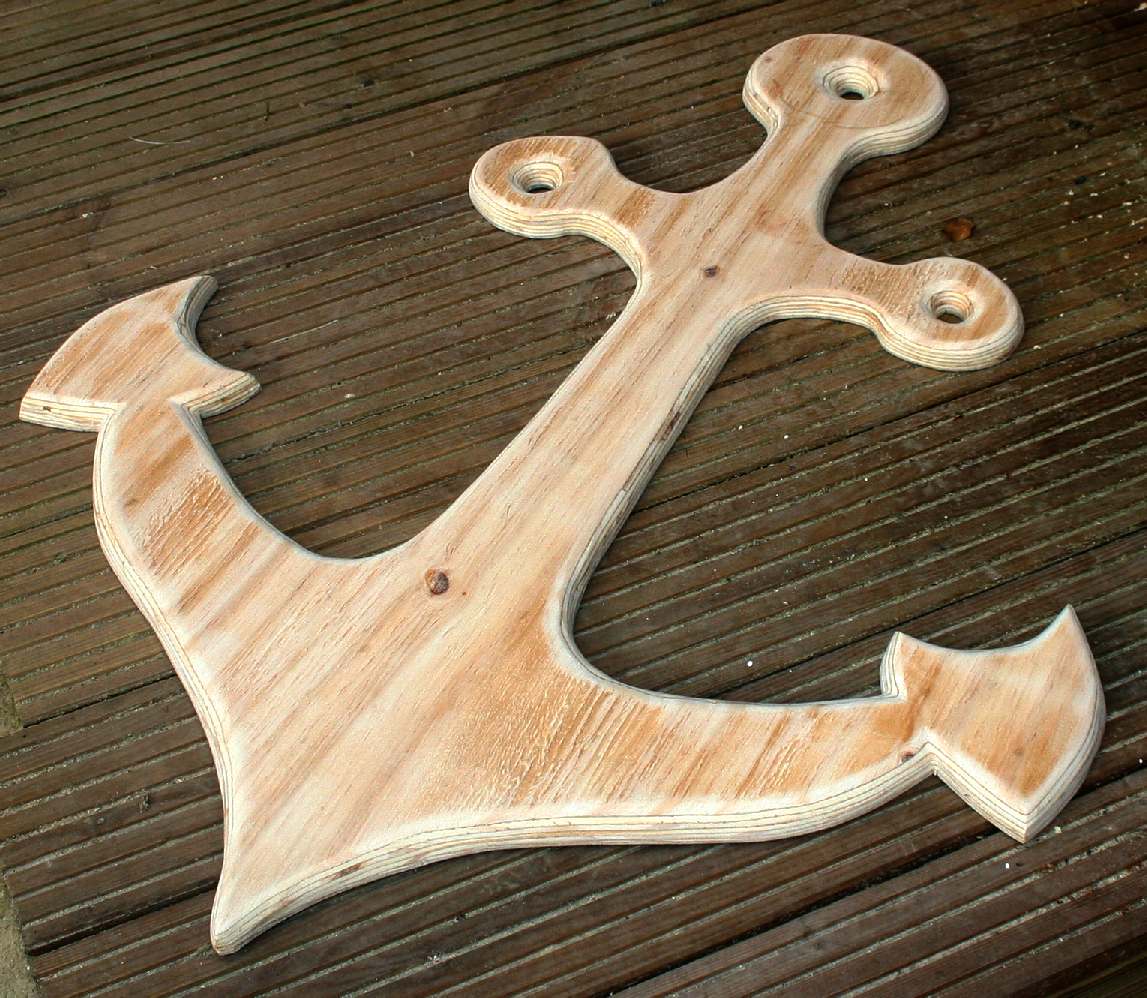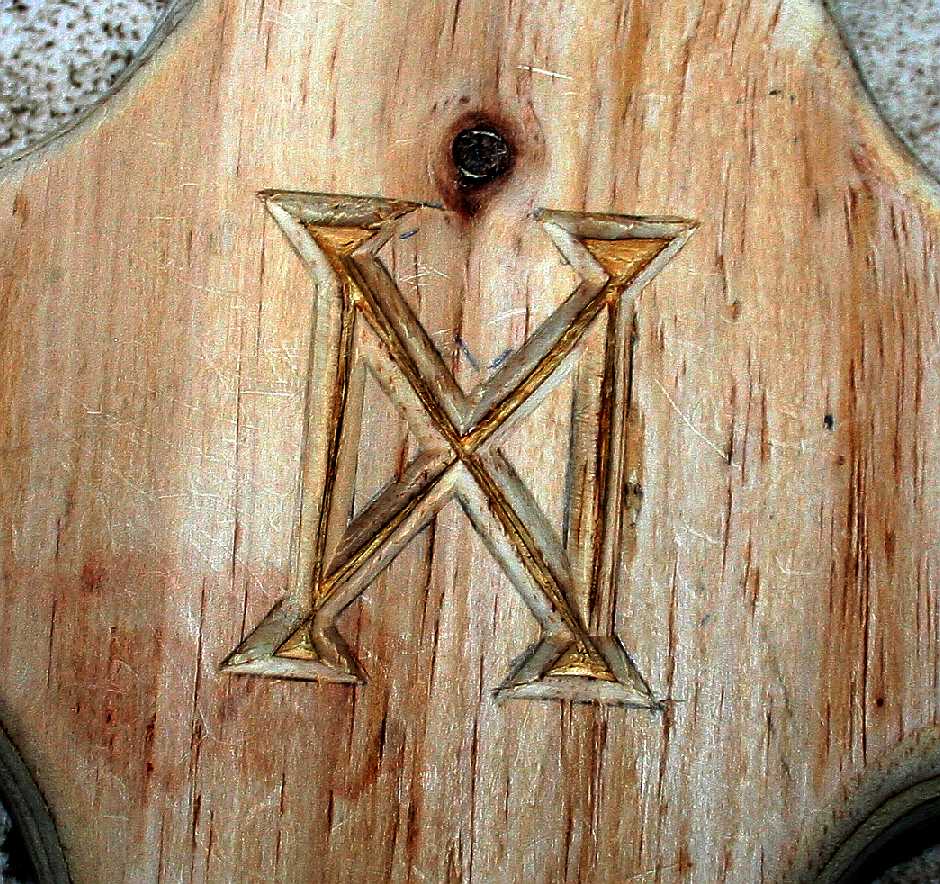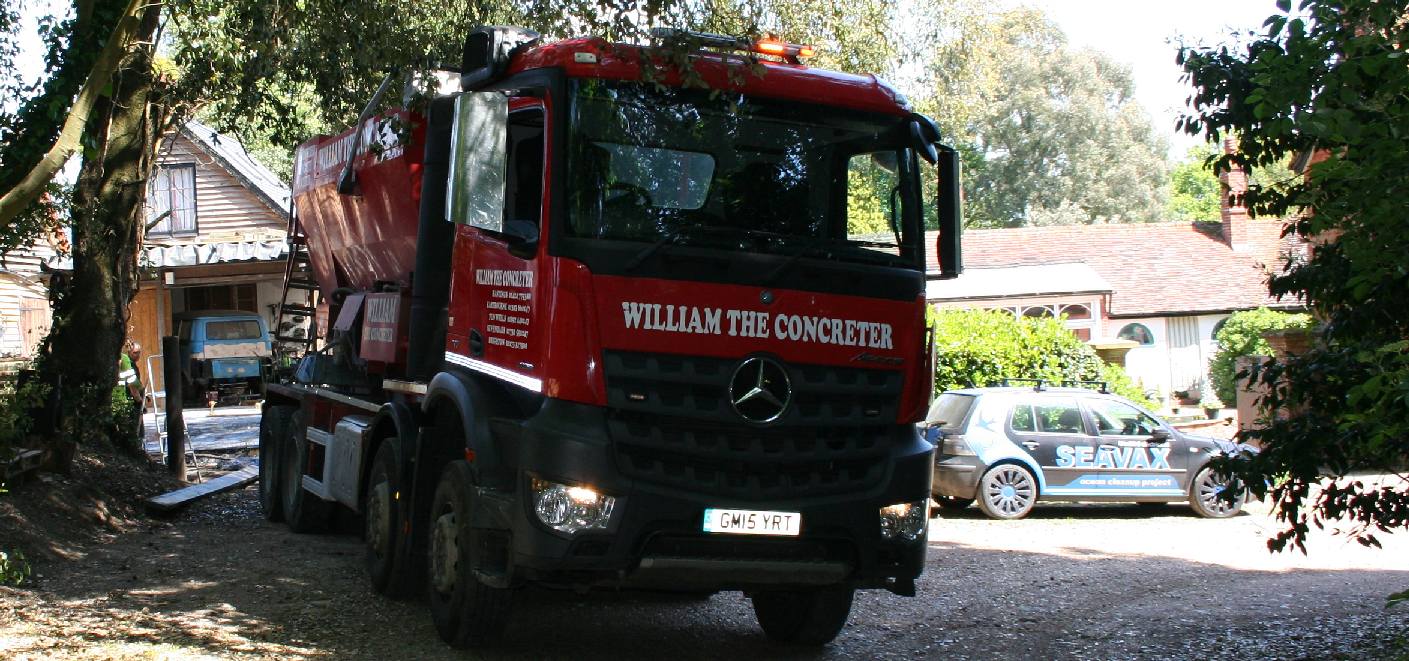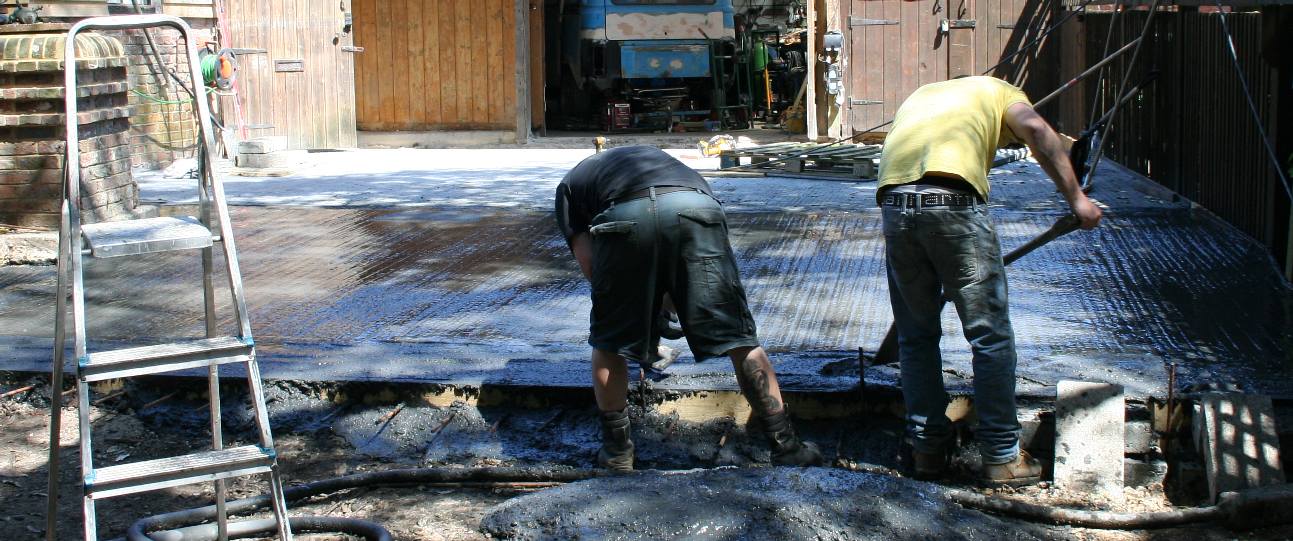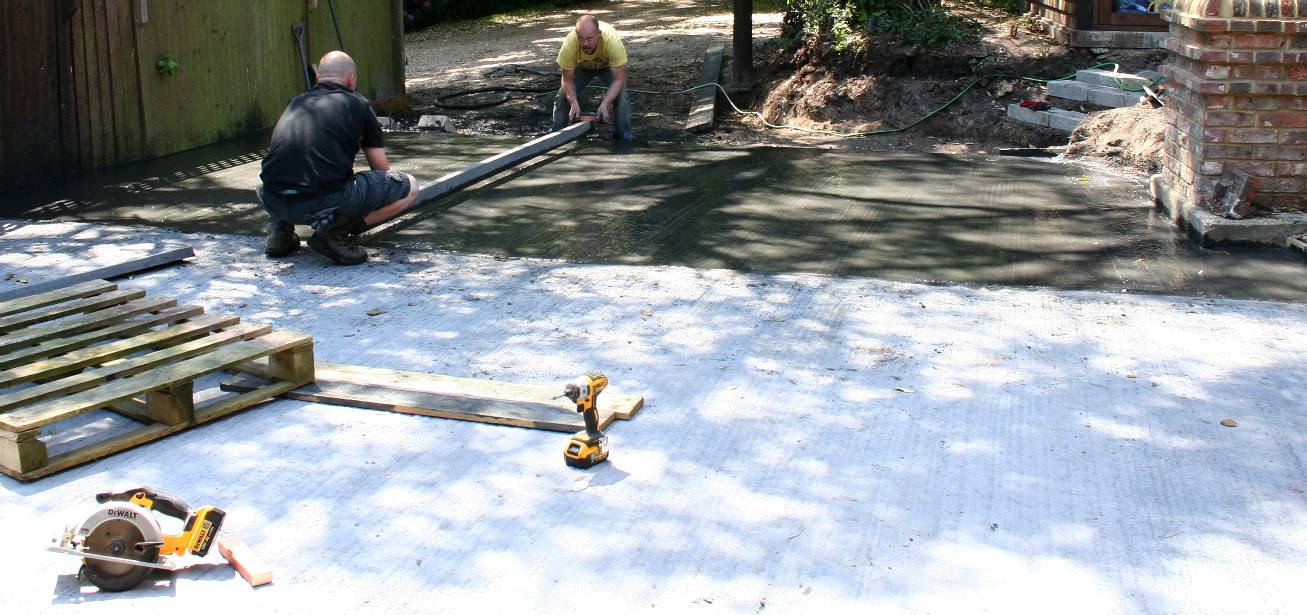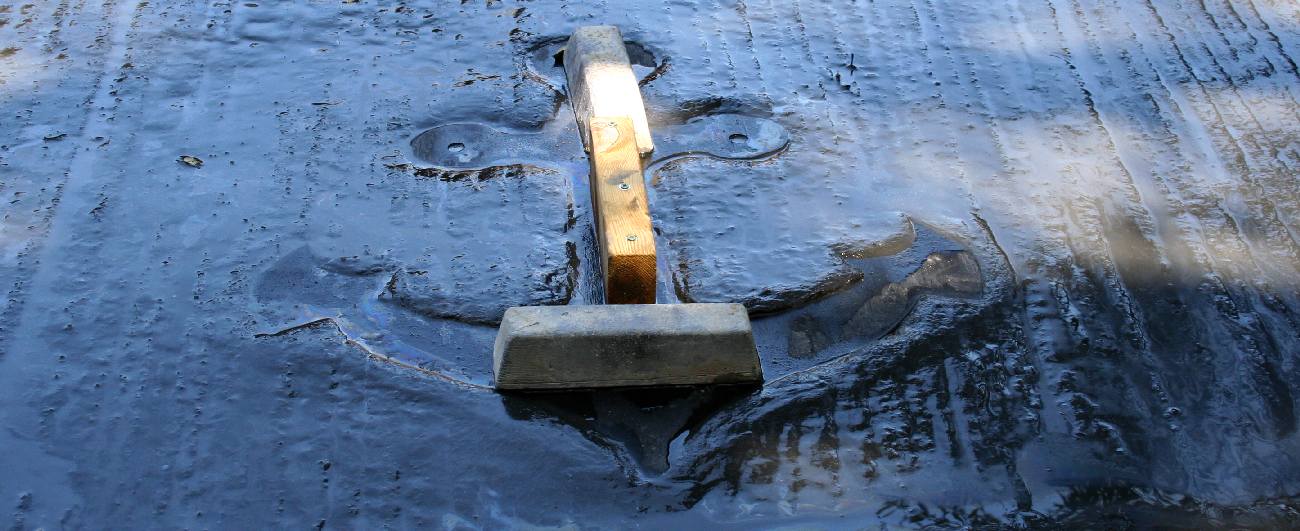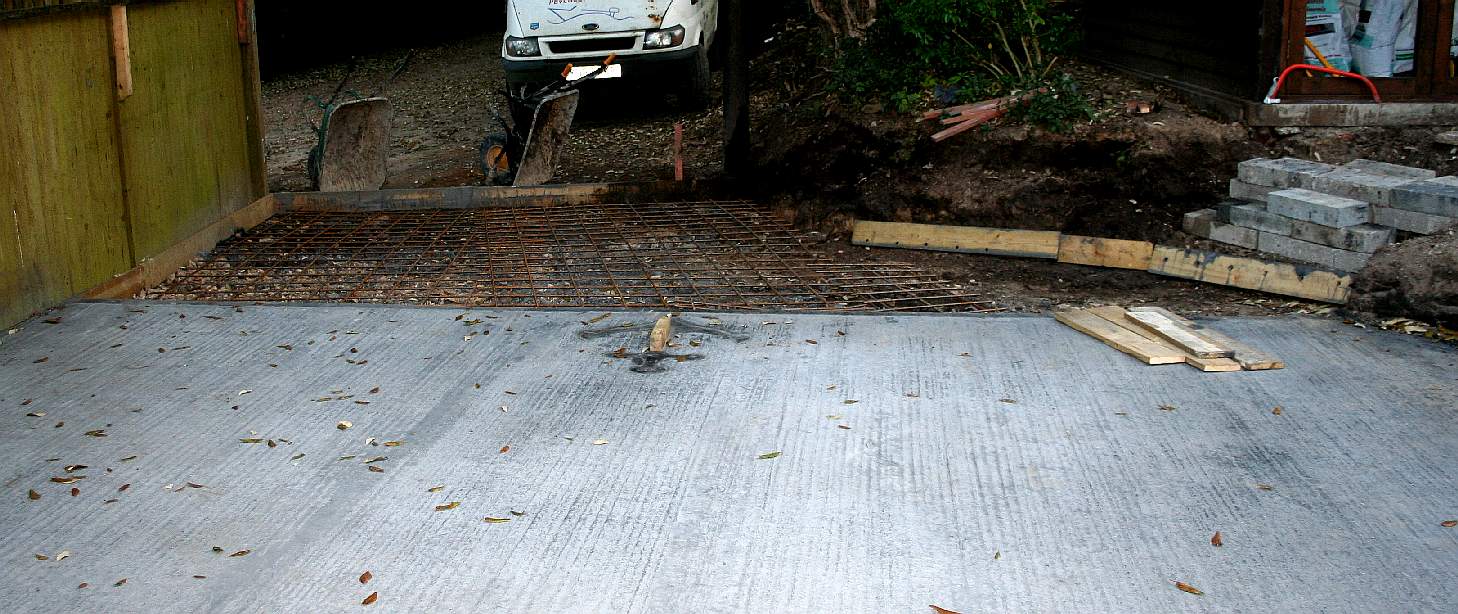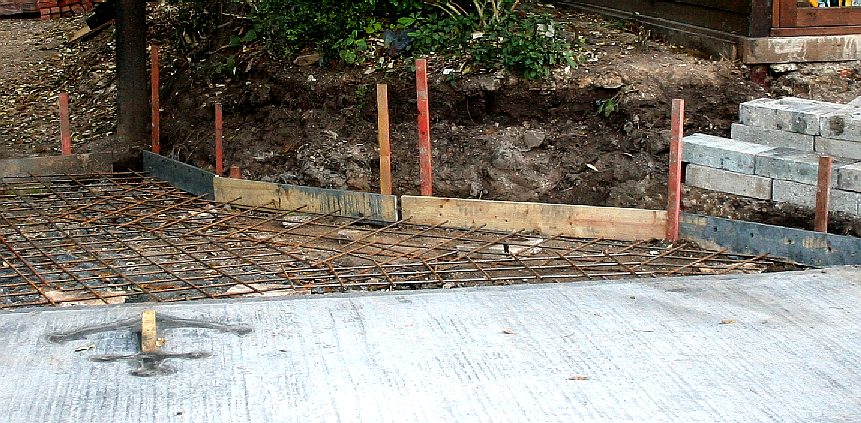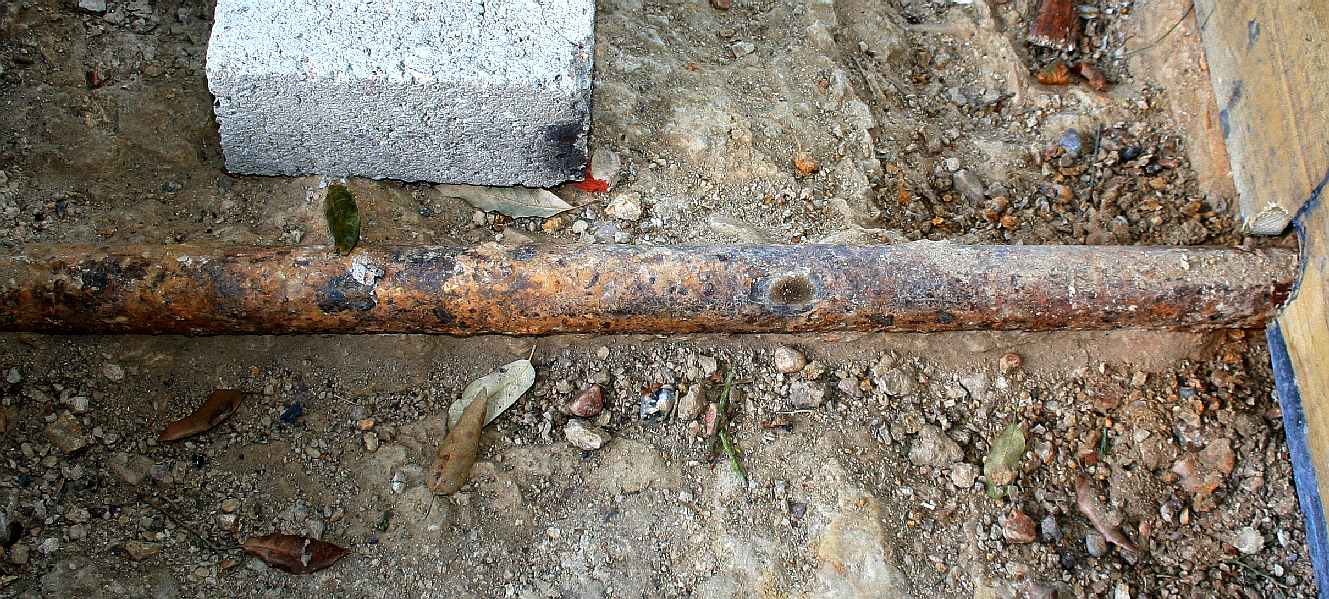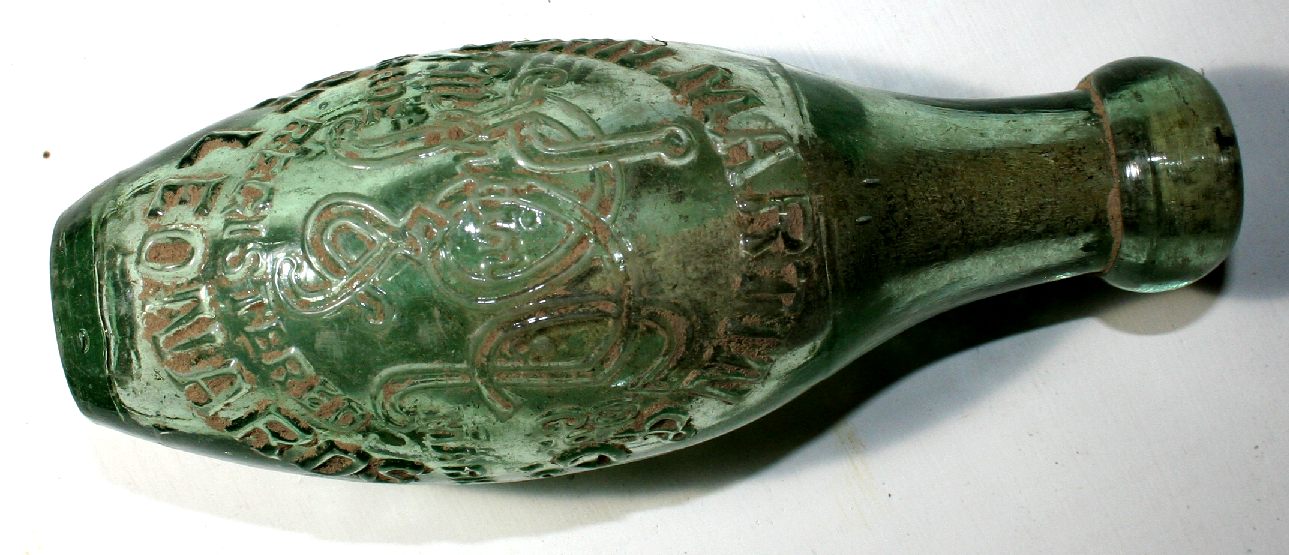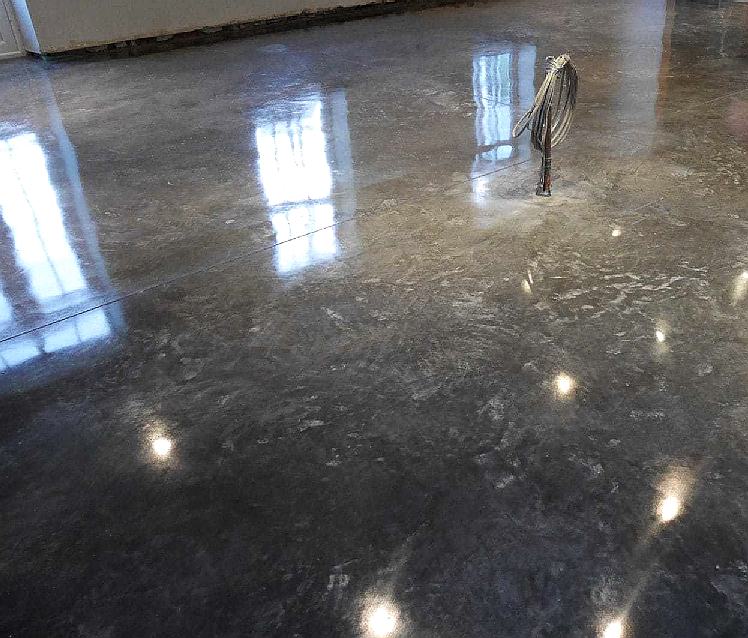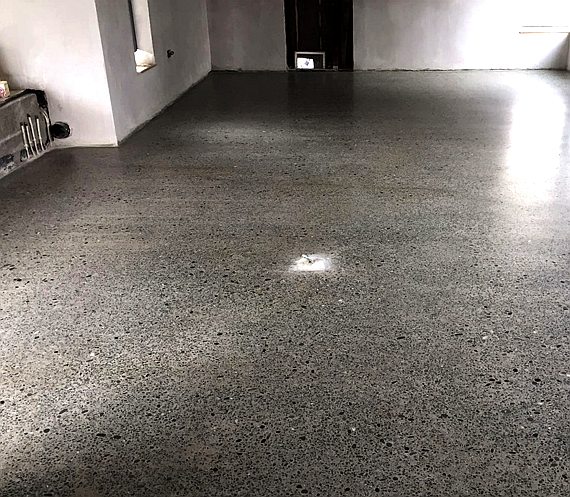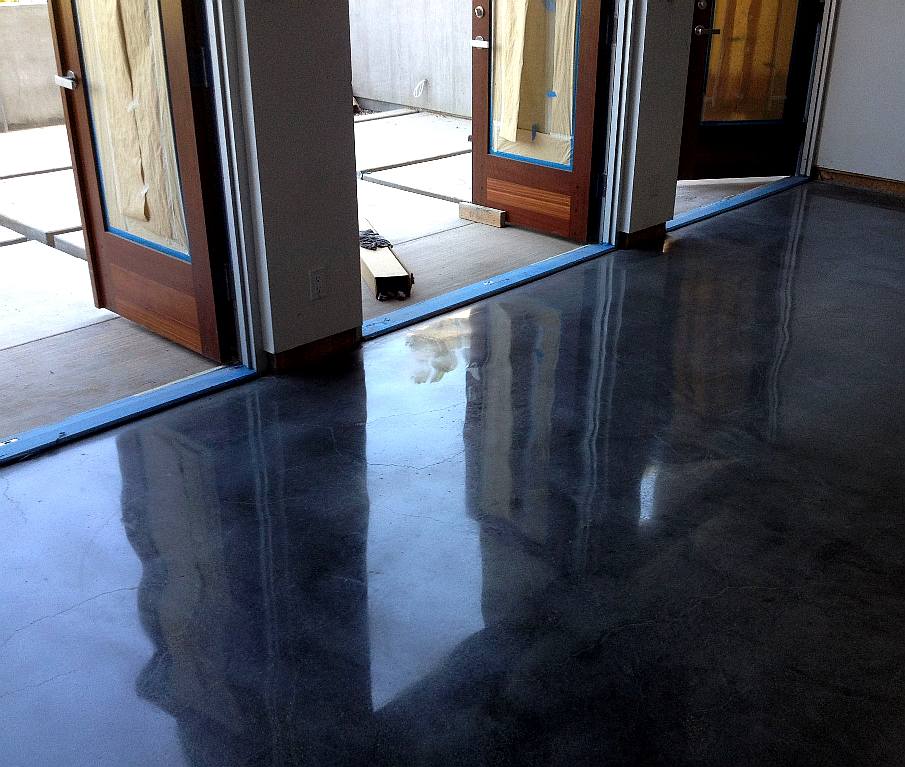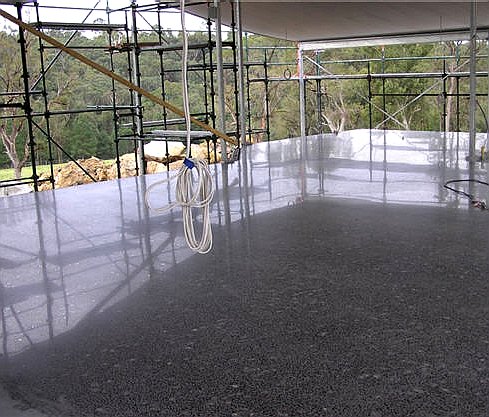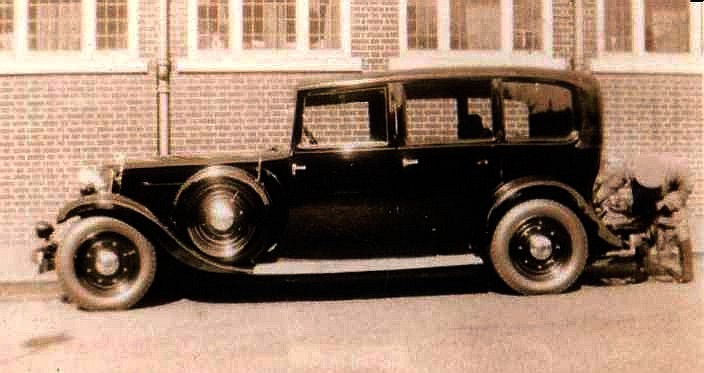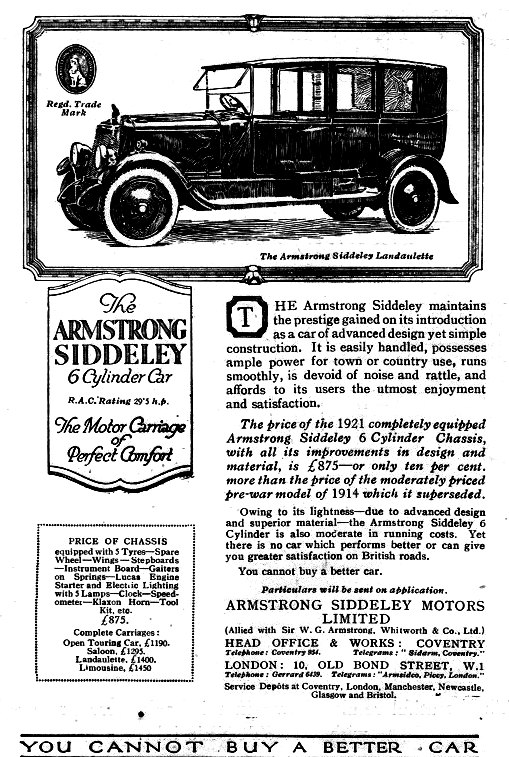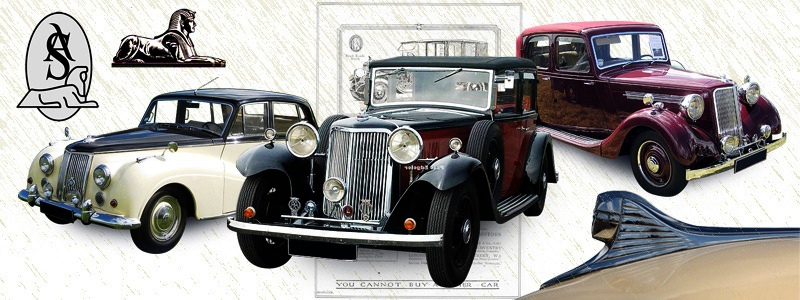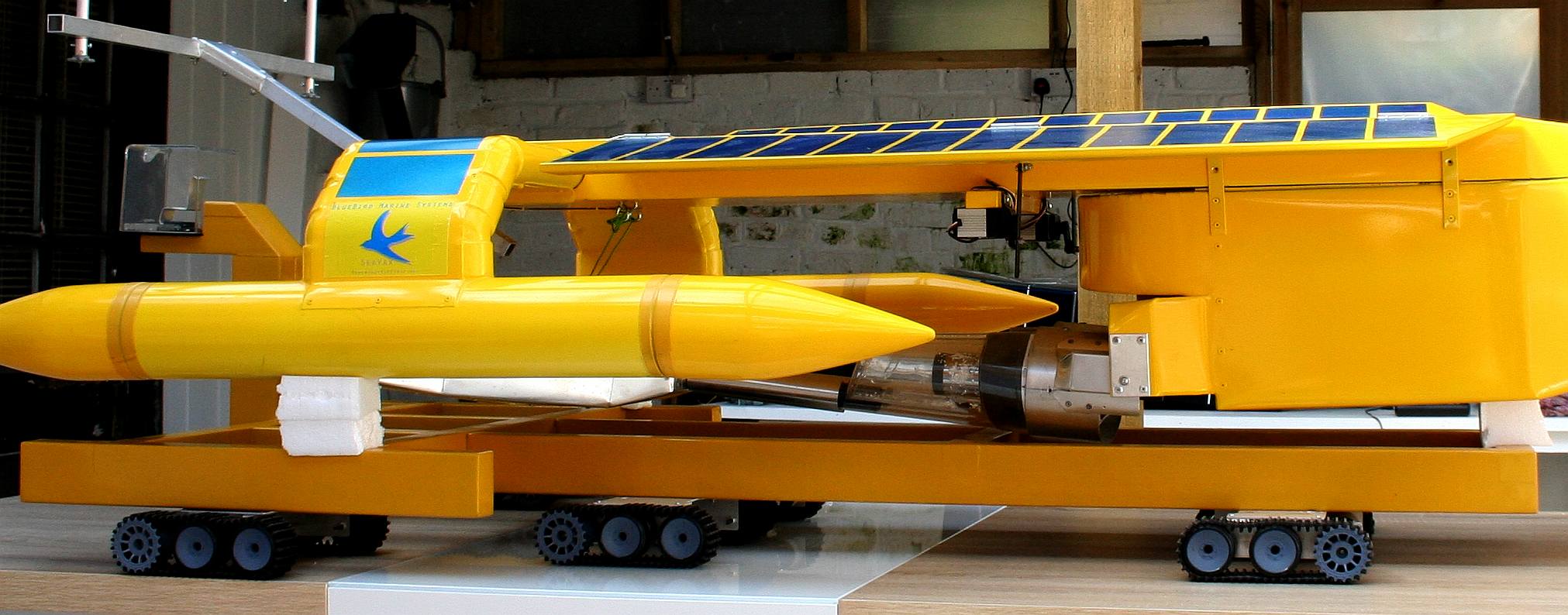|
AMPHIMAX PROTOTYPE: WORKSHOP ACCESS
ABOUT - CONTACTS - FOUNDATION - HOME - A-Z INDEX
CALL 2 HIRE - A sweet little digger was hired from Call2Hire that turned out to be just what the doctor ordered. The diesel plant was delivered on the back of a pickup at about 9:30 ish. They would pick up the machine later in the day after 4:00 giving us plenty of time to dig up and level the drive, where it was laden with years of soil and grass growth on one side below a sloping grass bank.
We have a workshop that will soon be clear of the VW Tour Bus that is presently being stored waiting for painting, meaning we can fabricate the prototype frame for the AmphiMax this year funds permitting, but the driveway that services our facilities was well past its sell-by date and was breaking up dangerously under heavy loads from deliveries of slate, ballast and cement. This problem was blocking progress, as we'd not be able to move the AmphiMax frame out of the workshop once we'd fabricated it.
We need to be able to allow trucks in as close up to the workshops as possible and for the surface to be reasonably level. This would be useful for times where workspace temporarily spills outside into the courtyard in fine weather.
HYDRAULICS - Powered by a diesel engine that drives a hydraulic pump, the caterpillar tracks and a front shovel gave a sure footing for the bucket and arm to slice into the drive and rake out the hardcore and earth.
Concreting meant digging up (or down) the existing slabs and getting the levels rights with shuttering. We decided to go for a grey concrete mix but nobody would supply us small batches of ready mix, even though firms like Hanson Concrete in Hailsham advertised such a service. They finally admitted that they wouldn't supply coloured concrete in batches smaller than 50 cubic meters, quoting over £250 per meter to put us off - and of course that did the trick.
Fortunately, we found a company that makes a colour admixture for concrete in Berkshire, thank to the internet.
HATCRETE ® Colourmix is the trade name for a water-reducing, workability-enhancing admixture that strengthens and integrally colours new concrete. It can be used in pre-cast or cast in-situ applications and can be colour matched to blend in or complement the surrounding landscape.
Pattern Imprinted Concrete Supplies Ltd
REINFORCED CONCRETE - Large civil engineering projects use a lot of steel and concrete. The second picture is a site at Eastbourne's Congress Theatre in June of 2018.
Hatcrete Colourmix is not a conventional concrete dye or concrete pigment and has largely superseded other methods of colouring concrete. It is a precision manufactured concrete admixture with stringently controlled properties which displays numerous advantages over basic concrete dye and concrete pigment.
We have yet to try the system out with help from 1066 William the Concreter, a company based near Battle in East Sussex. 1066 offer batch mix on site that is perfectly suited to the application of colour on a meter at a time basis, where the Colourmix chemical comes in a water soluble bag that you simply add to the hopper during the mixing process. It sounds good, but it is untried as we write.
1066 William the Concreter North
Trade Road
WOW - In not very long the digger had ripped up most of the old drive when leveling could begin. There were some tough patches of concrete and old ramps that needed to be cut with a diamond cutter and sledge hammered out, where even this machine has its limitations. Copyright photographs 9 May 2018 © Cleaner Ocean Foundation Ltd. All rights reserved except for education use and media review.
TOUGH GOING - This was a slab of concrete that the digger could not penetrate. The diamond disc cutter scored a weak line for some well aimed sledge hammering to bash through. Copyright photographs 9 May 2018 © Cleaner Ocean Foundation Ltd. All rights reserved except for education use and media review.
WHAT ON EARTH - The earth and rubble began to pile up as our very experienced driver made short work on grading and moving the excess. The earth seen here was moved onto our shared access road ready for a pick up the next day. Copyright photographs 9 May 2018 © Cleaner Ocean Foundation Ltd. All rights reserved except for education use and media review.
CLEARING - You can see the site going lower as the earth is moved offsite. Copyright photographs 9 May 2018 © Cleaner Ocean Foundation Ltd. All rights reserved except for education use and media review.
CLEAR - Moving this quantity of earth so quickly would have needed a gang of chunky labourers. Copyright photographs 9 May 2018 © Cleaner Ocean Foundation Ltd. All rights reserved except for education use and media review.
HAUL AWAY - One quick telephone call and this truck arrived to remove around 10 tons of soil and hardcore that was too dirty to use. Copyright photographs 9 May 2018 © Cleaner Ocean Foundation Ltd. All rights reserved except for education use and media review.
GRAB - It is fascinating to watch a skilled operator use this grab to position and bite a jaw full of earth. Copyright photographs 9 May 2018 © Cleaner Ocean Foundation Ltd. All rights reserved except for educational use and media review.
LIFT & RELEASE - Then up it goes into the back of the pick-up truck. Copyright photographs 9 May 2018 © Cleaner Ocean Foundation Ltd. All rights reserved except for education use and media review.
MULTIPLICATION - As with the digger, the hydraulics on the truck increase load capacity many time over. In around 30 minutes the drive was back to how it was before. We will make good with some beach when all the works are completed. Next we have to shutter the drive ready for the concrete pour. Copyright photographs 9 May 2018 © Cleaner Ocean Foundation Ltd. All rights reserved except for education use and media review.
FLEET - William the Concreter operate a fleet of trucks that will mix on site to reduce wastage. You only pay for what you use. This looks to be an economical system where you may not know exactly how much concrete you need. The only problem we have experienced is delays in booked times, blamed on a clutch not being available for one of their Mercedes trucks. We had to reschedule staff to work on a Saturday because of this.
SHUTTERING - It is important to get your levels right before pouring any concrete. This is achieved the old fashioned way with a spirit level and rough sawn boarding. Timbers can be supported at the correct height using bricks, tiles and slates. Copyright photographs 11 May 2018 © Cleaner Ocean Foundation Ltd. All rights reserved except for education use and media review.
ICE WELL - Before the days of refrigerators, ice was imported from the arctic in insulted ships in days of old. Hence, ice cream was a luxury that only the rich could afford. Ice was stored in underground chambers or in straw bales to make it last longer before melting. The above historic feature will be repaired and incorporated in the making good, where clearly not much thought was given to longevity of the inspection hatch. Copyright photographs 11 May 2018 © Cleaner Ocean Foundation Ltd. All rights reserved except for education use and media review.
REINFORCING - In this picture you can see the steel reinforcing mesh and the hardcore base. The concrete will be poured in several batches with the shuttering being struck 24 hours after pour. This means that several pours will be needed over at least six days. Copyright photographs 11 May 2018 © Cleaner Ocean Foundation Ltd. All rights reserved except for education use and media review.
ON SITE DELIVERY - William the Concreter is a local from from Battle. This truck has an extendable chute to allow pours a reasonable distance from the truck based hopper. The chute also swivels from side to side. Copyright photographs 14 May 2018 © Cleaner Ocean Foundation Ltd. All rights reserved except for education use and media review.
CHUTE - The pour in progress. We used a vibrator to settle the concrete. The ladder on the right was for our operator to pour the cement colour chemicals into the machine. Copyright photographs 14 May 2018 © Cleaner Ocean Foundation Ltd. All rights reserved except for education use and media review.
WALKING THE PLANK -We needed to get from one side of the pour to the other for tamping. Rakes with long handles were used to re-distribute and uneven lumps. Copyright photographs 14 May 2018 © Cleaner Ocean Foundation Ltd. All rights reserved except for education use and media review.
EBAY DEAL - [LEFT] Here we see a popular medium size concrete vibrator. [RIGHT] This is the concrete vibrating unit that we attempted to purchase for the offer price of £239 pounds all in, that was advertised on Ebay by C Bury Sales Ltd as coming with a smaller unit that could have been useful for footings and posts. Unfortunately, the long hose for the main motor drive was not delivered after eighteen days and the smaller hose worked only when it felt like it. We could not wait any longer, so hired a unit from a local builder, having also hired a similar unit from a local builders merchants.
VIBRATING COMPACTOR
The concrete is vibrated at high frequency with a 6 meter hose using a 110 volt industrial unit that cost in excess of £1,000 pounds. This was on loan to us for the two big pours. The third pour cost us £35 to hire a unit from Jewsons in Hailsham and for all subsequent concrete works we considered biting the bullet and purchasing our own from Ebay. We thought we'd found a good value unit that was described as: Electric Vibrator HF. The other specifications included: Voltage/Frequency240V/50Hz, Power: 1600w and no-load speed of 18,000 rpm with a shaft diameter of 40mm and a flexible hose 4 meters long. This CE approved unit should have come with a shoulder harness and a free 240 volt poker with a 1 metre flex operating at 500 watts. Not a bad deal delivered at £239, meaning our other concreting jobs will not be quite so fraught. Unfortunately, the main hose was not delivered as described, leaving us in the lurch and the charity some £239 pounds lighter. We hope to recover than sum in due course and find another unit from a more reliable vendor.
BATCH COMPLETE - In the picture you can see the concrete tamped and bull-nosed. Now all we need is 12 hours without rain - and 24 hours to elapse to strike the shuttering ready for the next section to be shuttered. This section was relatively flat and the same height as the broken slabs that were removed. Copyright photographs 14 May 2018 © Cleaner Ocean Foundation Ltd. All rights reserved except for education use and media review.
MICK - William the Concreter was the only local company who was willing to let us colour the batch mixes as they were being poured. The problem being that nobody could guarantee the consistency of the colour if it was not ready-mix. Mick was particularly helpful in counting out the meter pour to allow our operator to gauge the mix. In the end the colour was not too bad. Copyright photographs 14 May 2018 © Cleaner Ocean Foundation Ltd. All rights reserved except for education use and media review.
ACCESS - The original access was adequate for traffic C.1900 when this building was thought to have been constructed in at least its most basic form. In those days the vehicles were largely horse drawn but from 1909 the then owner of this building garaged his vehicles here building up to a 1919 Armstrong Siddeley, a very large luxury vehicle that is pictured below. Further along the shared drive tarmac has been laid from the junction of Chapel Road and Church Road, but a good portion of the drive is hardcore and pebbles, though suitable for heavy delivery trucks. Eventually, when the other occupiers of the park decide on an upgrade, tarmac is sure to lead onto this area. Copyright photographs 17 May 2018 © Cleaner Ocean Foundation Ltd.
STEPS - Brick steps were discovered leading up to the doors of an outbuilding seen here top right. Other walls and drainage were discovered in this area from when this was part of a market garden operation, presumably before the site was used to generate electricity for the village of Herstmonceux. Copyright photographs 17 May 2018 © Cleaner Ocean Foundation Ltd.
ARCHAEOLOGY - You cannot dig anywhere on this site without discovering something. In this picture you can see the engineering bricks that were part of the original steps leading up the bank from the drive - we think to a potting shed or other garden unit. Copyright photographs 17 May 2018 © Cleaner Ocean Foundation Ltd.
BANK - In this picture you can see how the steps have been cut into the earth so that they lead up the bank in a regular curve and to the outbuilding doorway. Copyright photographs 17 May 2018 © Cleaner Ocean Foundation Ltd.
ANCHOR SEAL - Using an off-cut of plywood, an anchor was drawn onto cardboard and cut out using our trusty DeWalt battery powered jigsaw. This wooden plug will be pushed into the drive concrete as our ocean seal. Copyright photographs 18 May 2018 © Cleaner Ocean Foundation Ltd.
IMPRINT - The edges of the stamp had to be angled and rounded so the the wooden plug could be removed once the concrete is set. The initials of the artists were carved into the crosstree shaft. Copyright photographs 18 May 2018 © Cleaner Ocean Foundation Ltd.
TRUCKER - William the Concreter returns with another batch of his finest C35 grade of batch supplied concrete. We are grateful to this company for working on a special Saturday, the day that Prince Harry married Megan in another Royal wedding spectacular. Copyright photographs 19 May 2018 © Cleaner Ocean Foundation Ltd.
SLOPING - This section of the pour is sloped making it a bit more difficult for the builders to get the height right across the slab. Copyright photographs 19 May 2018 © Cleaner Ocean Foundation Ltd.
TAMP - It takes two men to tamp the concrete, each working in synchronisation with the other. There are two more sections to pour. One is level and the other has even more slope. Copyright photographs 19 May 2018 © Cleaner Ocean Foundation Ltd.
SEAL - The wooden anchor plug is set into the wet concrete, after it was coated with wax and polished in the hope that this might make removal easier once the concrete has set. Copyright photographs 19 May 2018 © Cleaner Ocean Foundation Ltd.
3RD POUR - This section of the shuttering proved to be the most difficult, even though the area is smaller. That is because we have to slope down at a sharper angle to meet the pebble drive. We also had to skirt around an oak tree that we wanted to protect. But we needed to get as close in as possible to install a retaining wall meaning that the shuttering would have to be curved around the roots and some distance away. Copyright photographs 21 May 2018 © Cleaner Ocean Foundation Ltd.
DUAL SLOPE - The concrete has to slope downhill (west) to meet with the existing drive with a slight incline south such that rainwater does not puddle in the corner where the steps meet. Several boards had to be cut and staked, each one taking the same angle as the last until the final board met with the end shutter. Copyright photographs 22 May 2018 © Cleaner Ocean Foundation Ltd.
OLD WATER PIPE - We uncovered this old iron/steel water pipe. The old well on site once fed water to the local walled garden on the other side of the Park. Vegetables were grown in Herstmonceux and sold at Hastings market. The well also supplied water to a local bottling company in Hastings. Copyright photographs 17 July 2018 © Cleaner Ocean Foundation Ltd.
BOTTLED WATER - This bottle and a lot more broken examples like it were dug up on site close to the ancient well that is presently supplying sustainable water supplies to a number of concerns in Lime Park, including our charity. Water bottles like this are collectable antiques and a reminder of the days before PET plastic lined our supermarket shelves. Copyright photographs 17 July 2018 © Cleaner Ocean Foundation Ltd.
DRIVE LEAD IN - You can see the shuttering that is used to delineate the area of concrete pour and define the angle of the slope. At one end there is less of a lead in, whereas at the other side, the slope is greater due to the angle of the drive as it goes downhill. Copyright photographs 17 July 2018 © Cleaner Ocean Foundation Ltd.
POLISHING THE CONCRETE
Apart from making access easier to and from the workshops, the drive also has to look presentable for visitors to our HQ. Once the concrete has hardened and seen some wear, and this means after the production of the AmphiMax frames and SeaVax treatment head modules, we may then give the concrete a shine.
Polished concrete is concrete that has been processed through a series of mechanically ground "polishing/grinding" steps similar to the production of terrazzo. This process also includes the use of a penetrant chemical known as a hardener. The concrete densifier/hardener penetrates into the concrete and creates a chemical reaction to help harden and dust proof the surface.
MARBLE OR CONCRETE - These are some examples of polished concrete flooring and you may be forgiven for thinking that it looks like marble in some of these pictures.
A diamond polished concrete floor is very time-consuming if done correctly, this is due to the fact that there can be up to 12 steps of actual grinding involved. The general rule is to start the initial grinding with a coarse 30- 60-grit diamond and finish with an 800, 1500- or 3000-grit diamond, depending on the exposure level of aggregate and gloss level required. These diamonds are impregnated inside a metal- or resin-bonded segment. Typically the diamonds' grit size will double once the first grind has been carried out.
1919
- In 1902 John Davenport Siddely started Siddeley Autocars, importing
Peugeot mechanical parts and clothing them in his own British built car bodies. By 1904 he was designing his own mechanical components, which were made by the
Wolseley Tool and Motor Car Company Ltd and assembled by Vickers Son and Maxim in
Crayford. These Siddeley Autocars marked the beginning of a great car maker.
In 1919 Siddeley-Deasy became part of Armstrong Whitworth. The Armstrong Whitworth Development Company emerged which concentrated on avionics, and although John Siddeley was heavily involved with this company he did not get a seat on the board for some years. Another product of the merger was Armstrong Siddeley Motors Limited with Siddeley the managing director. The first new car released in 1919, was a 30 hp with a 5 litre engine seen above and as operated by Charles de Roemer in this location, licence plate number: BXP 153. This was a car for the aristocracy and the upper echelons of the carriage trade. Having the Duke of York (later King George VI) as a customer was a sound endorsement of both the car and the marque. Copyright photographs 17 May 2018 © Cleaner Ocean Foundation Ltd.
PORTABLE BOATYARD FLEXIBILITY
The AmphiMax is made from around 22 identical steel frames that will be delivered to a beach location for assembly. Once assembled, the AmphiMax is fitted out to become a portable boatyard with welding equipment, compressor and eight tractor drives that are powered by four AmphiMax™ diesel engines.
This portable dockyard is also the launch and recovery mechanism - and the most economical way of producing SeaVax vessels from sub-assemblies.
That is the plan. But before that stage, we are likely to build a smaller unit for launching a RiverVax size SeaVax.
LINKS & REFERENCE
https://
VERSATILE BOAT SERVICING - Amphimax is most probably the most versatile portable boat and small shipbuilding solution ever conceived on a small budget.
AMPHIBIOUS LAUNCH - AMPHIMAX - CAB - CHASSIS - COSTINGS - CRANE - DIESELS - DRIVE - FLOATATION - GENERATORS - HILL CLIMBING HYDRAULICS - LAUNCH SITE SX - MODEL 1/20 - MOTORS - SUSPENSION - TIMETABLE - TRACKS - TRAILER - THRUSTERS - VIBRATOR - WHEELS
This website is provided on a free basis as a public information service. Copyright © Cleaner Oceans Foundation Ltd (COFL) (Company No: 4674774) 2018. Solar Studios, BN271RF, United Kingdom. COFL is a charity without share capital. The names Amphimax™, RiverVax™ and SeaVax™ are trademarks.
|
